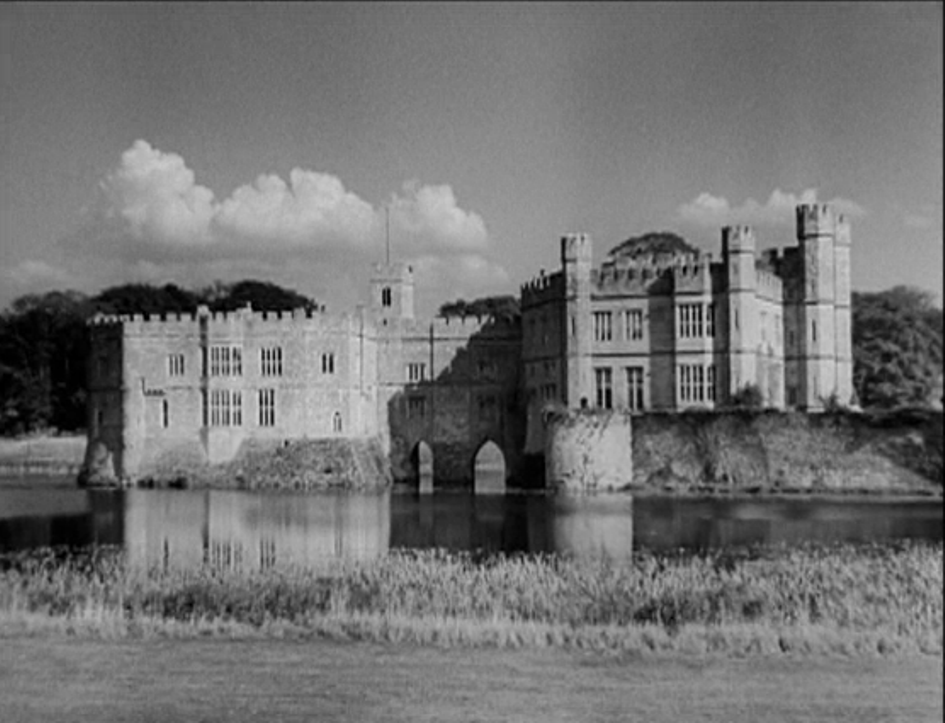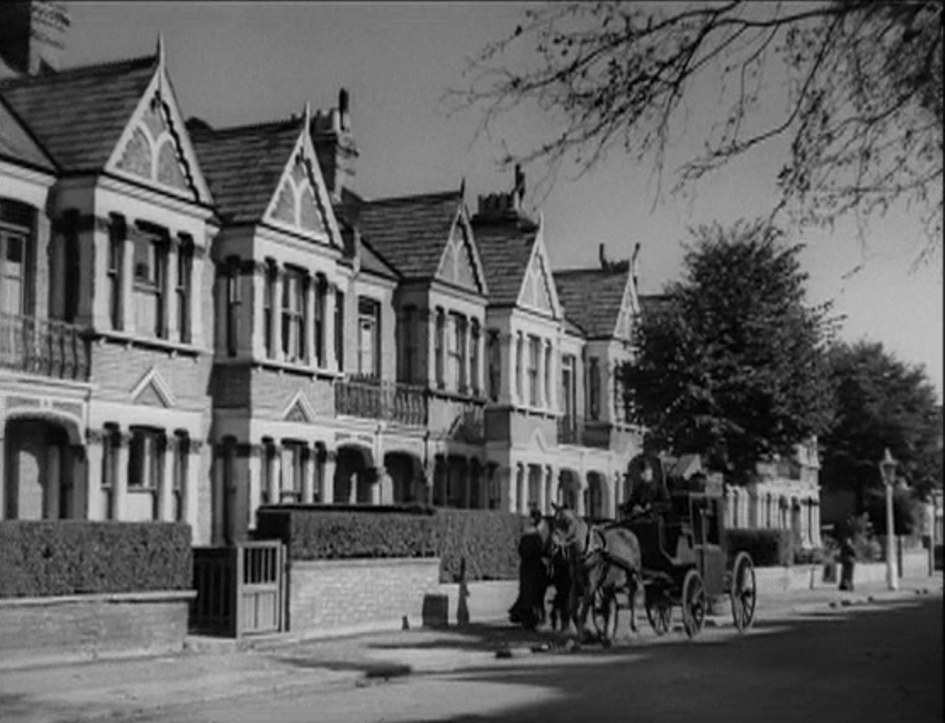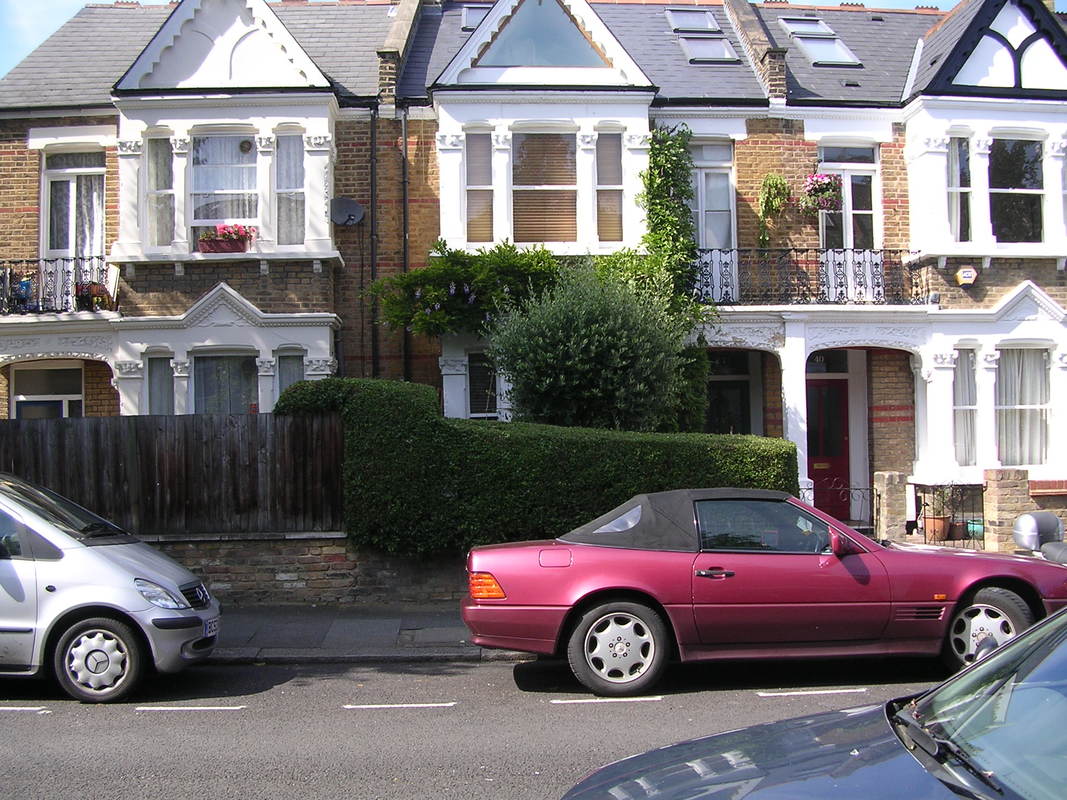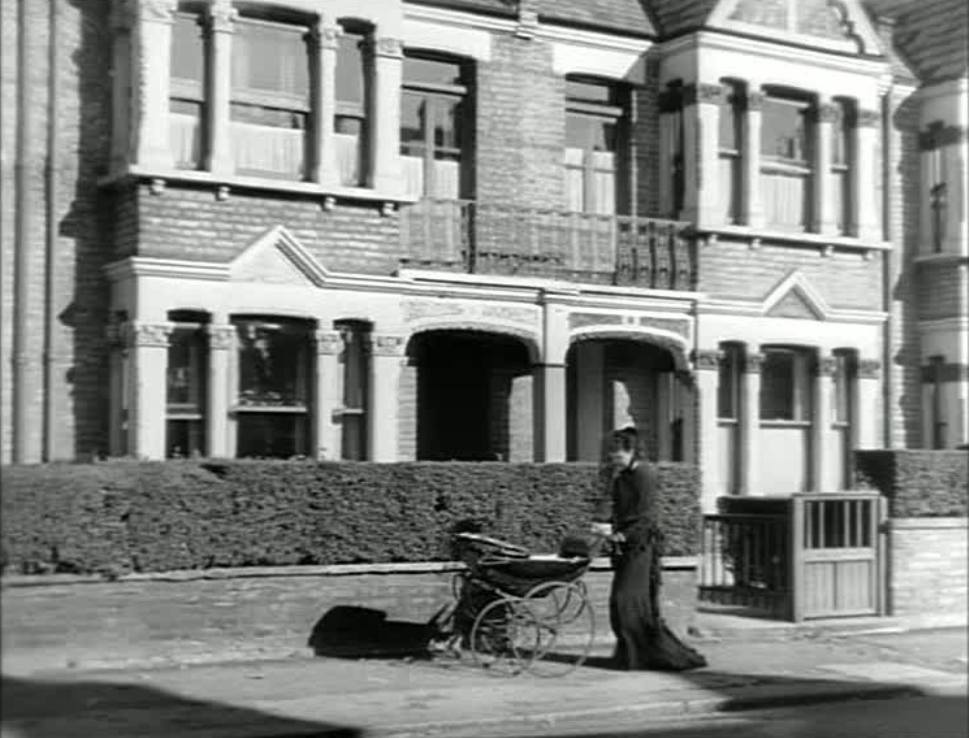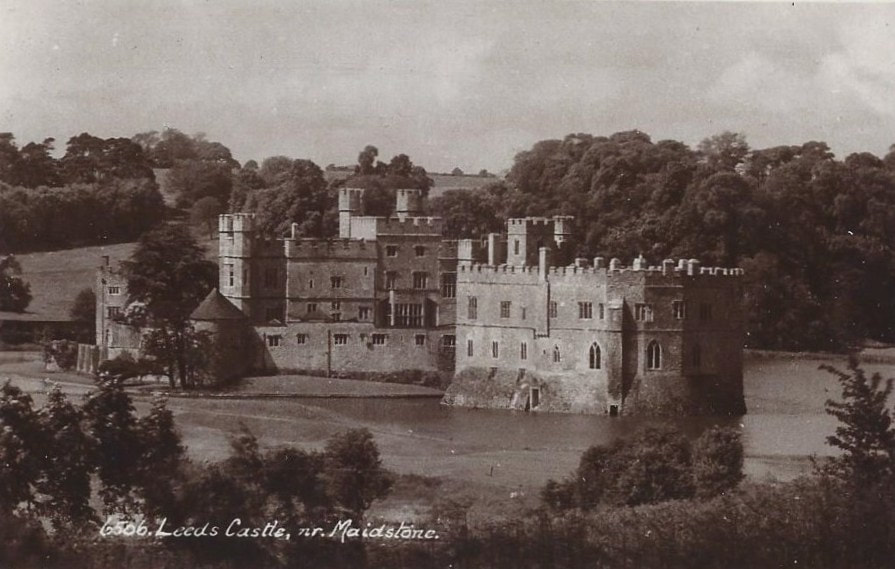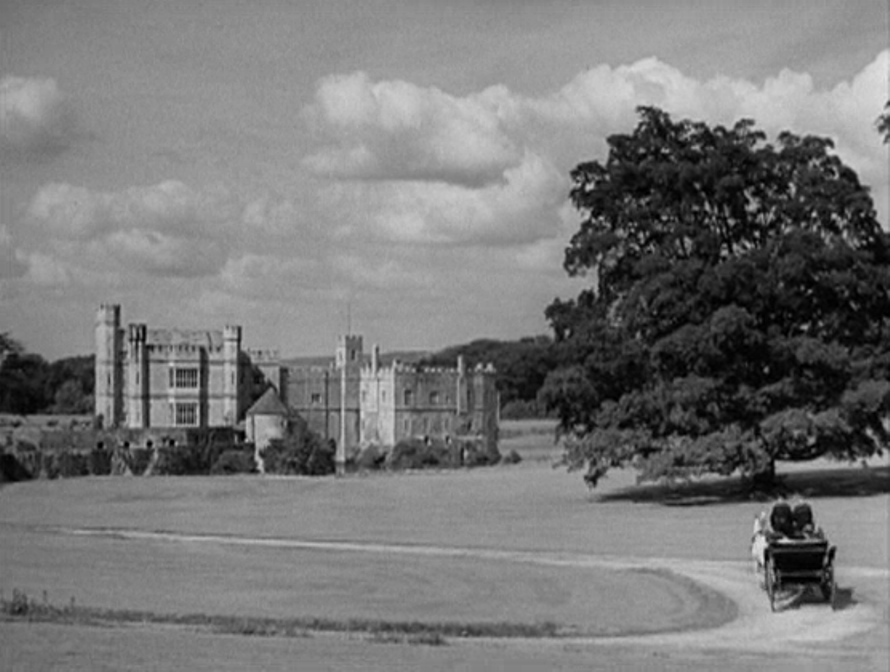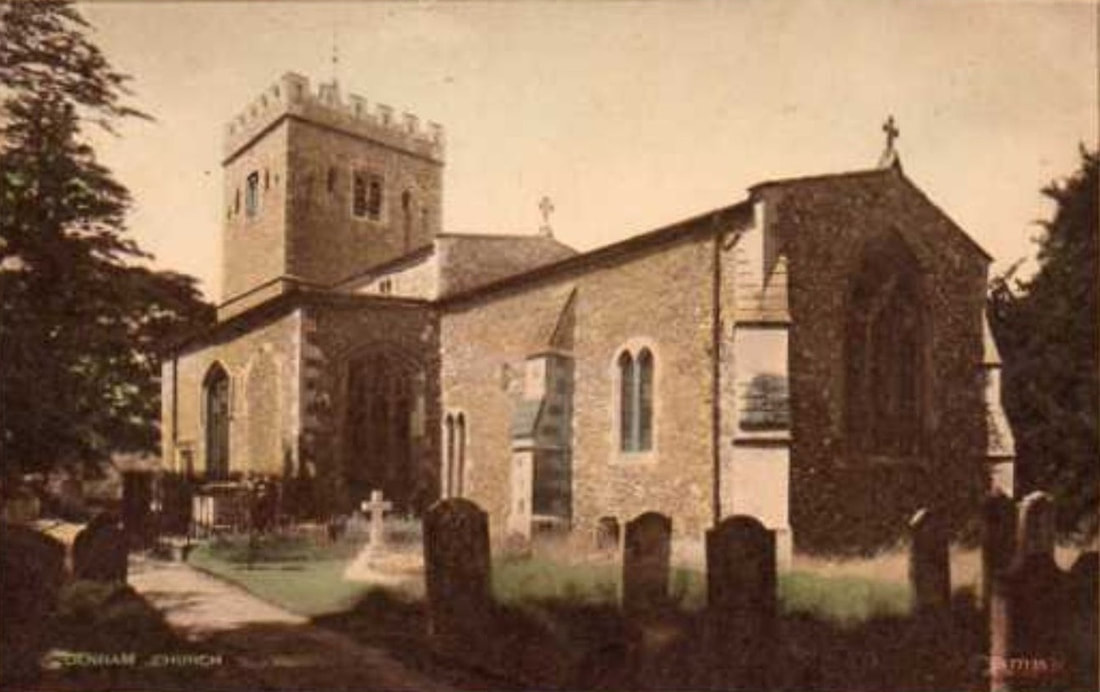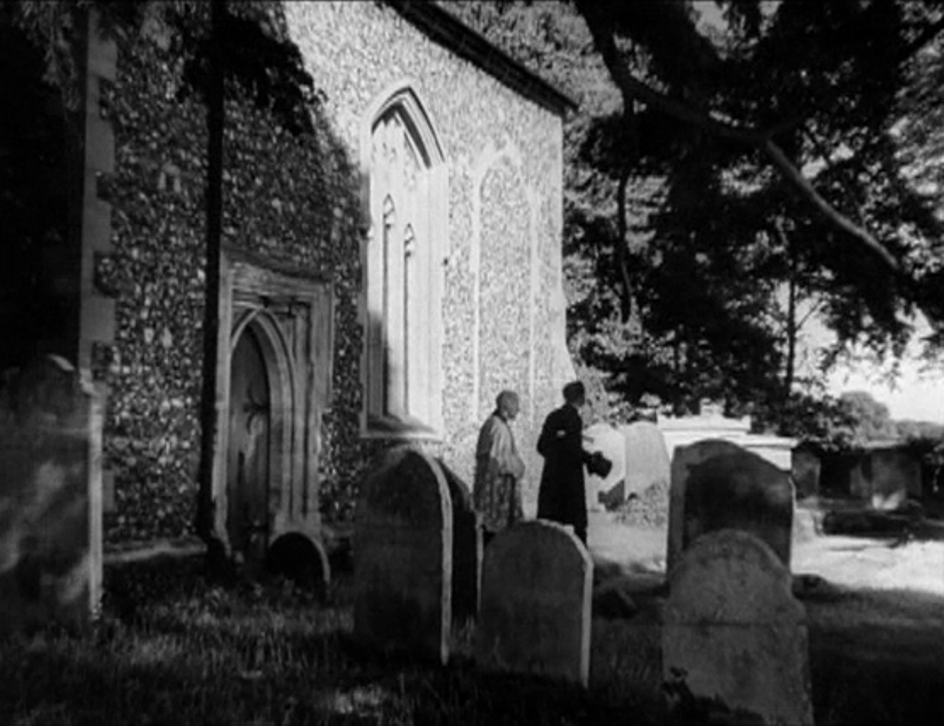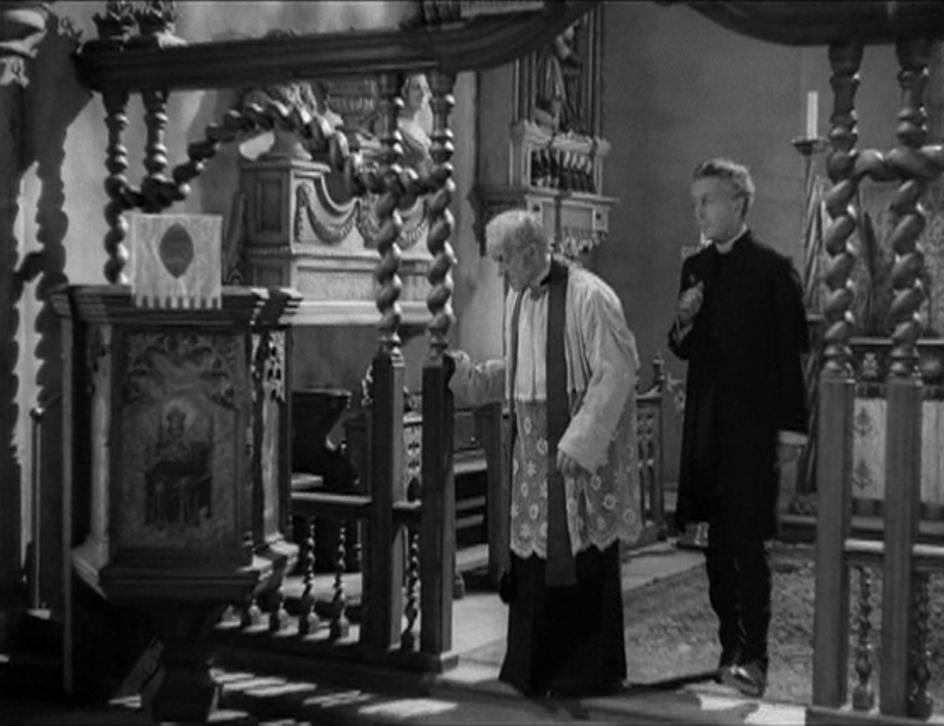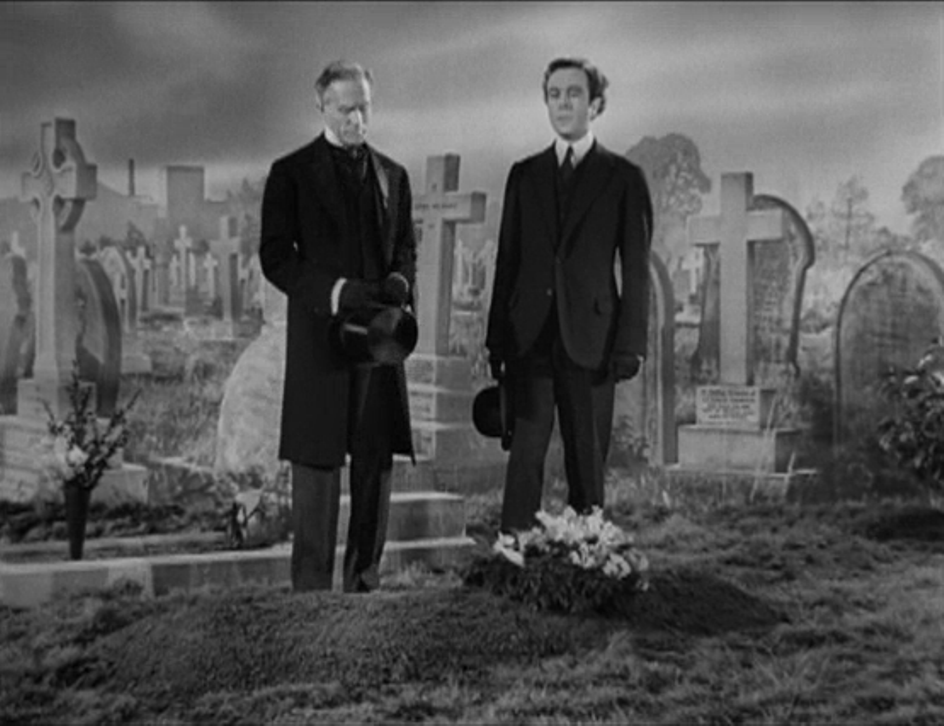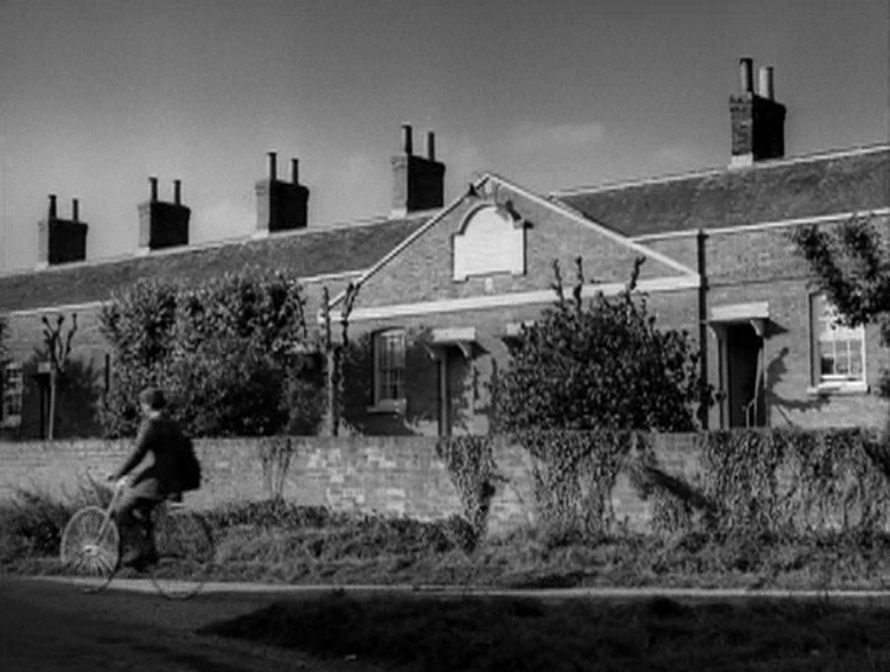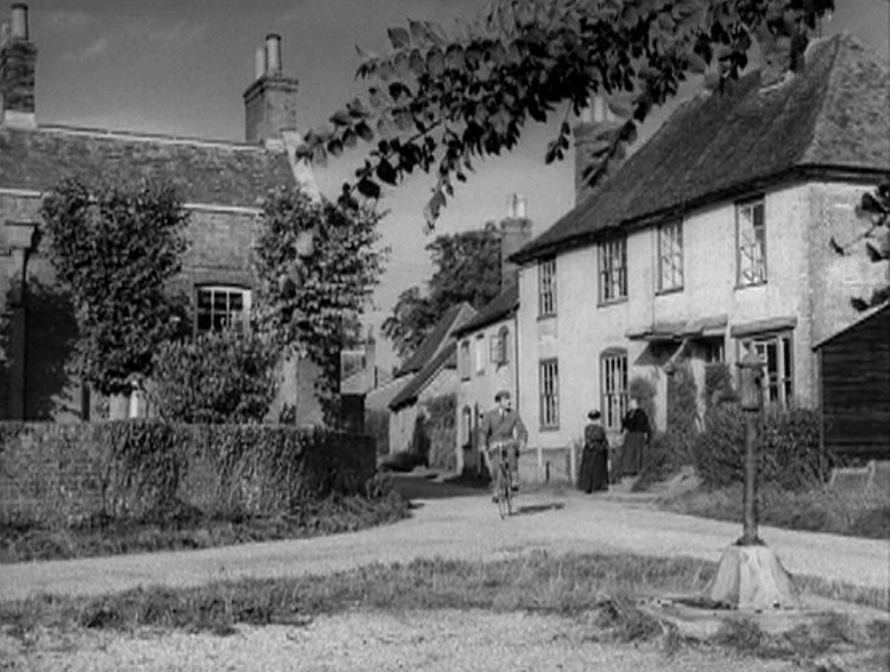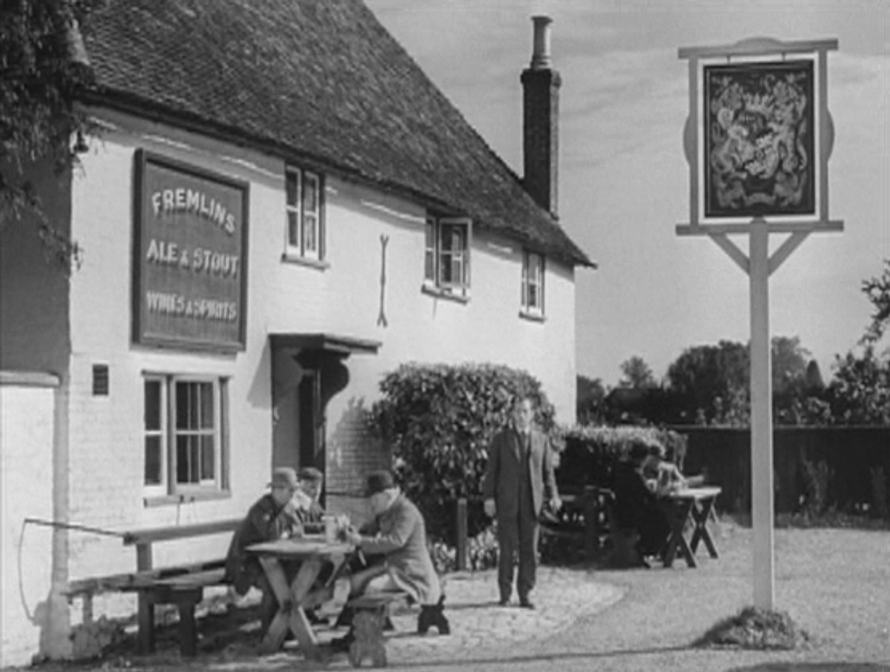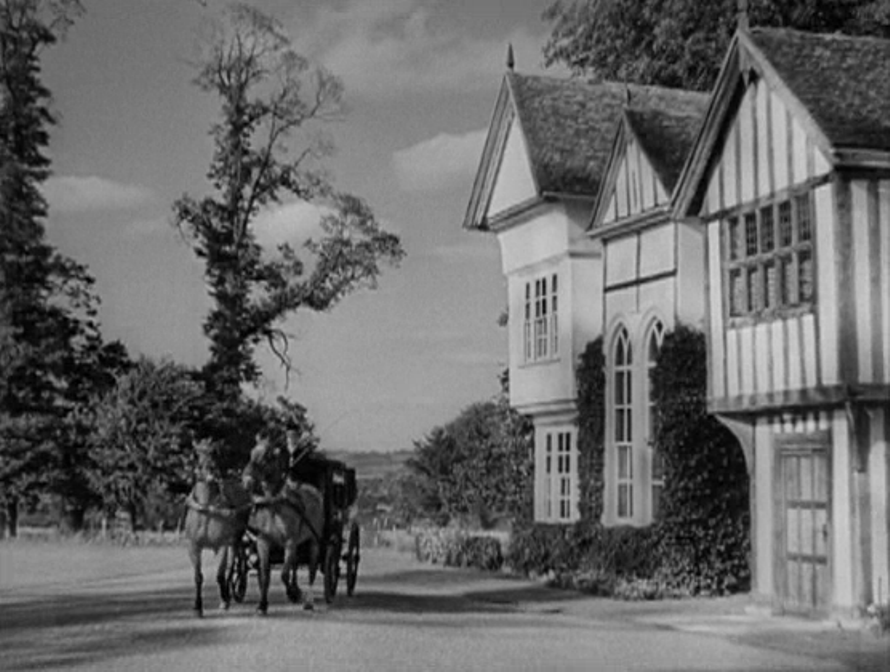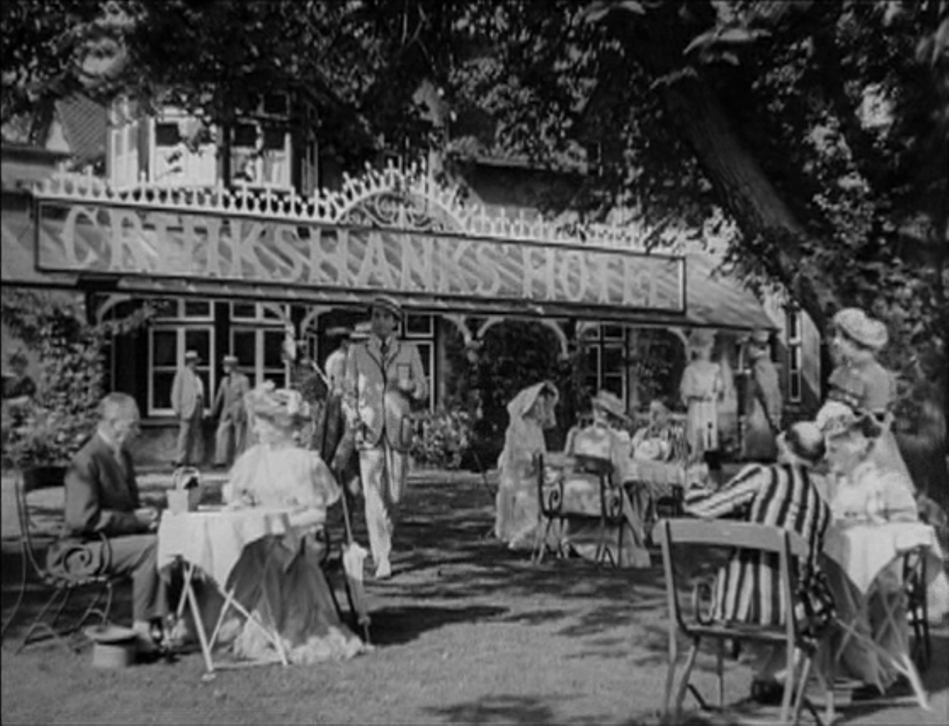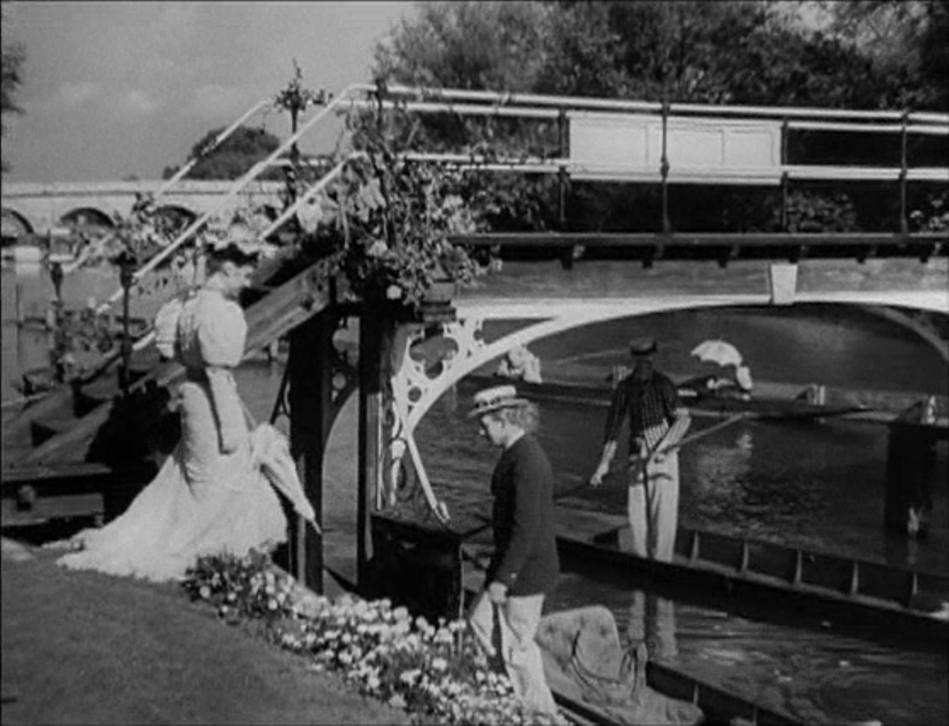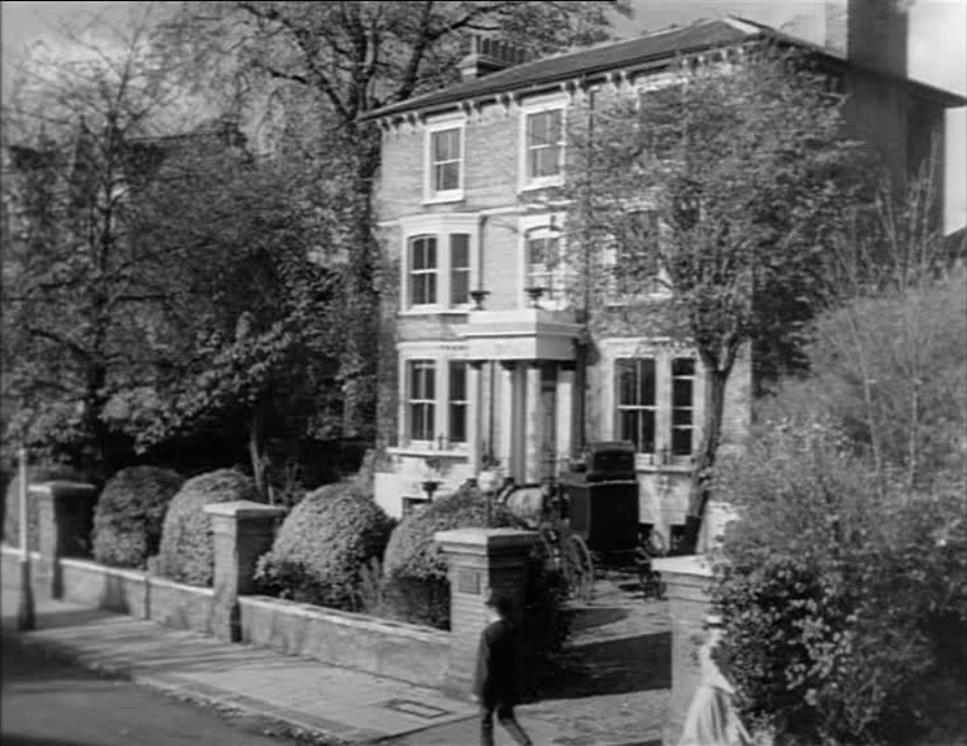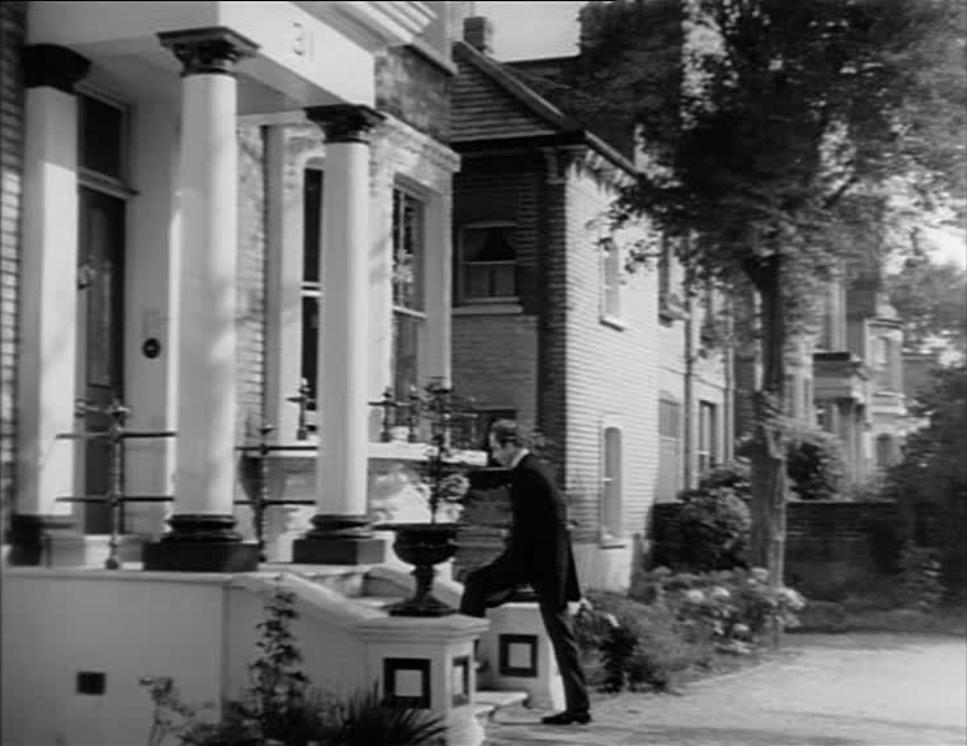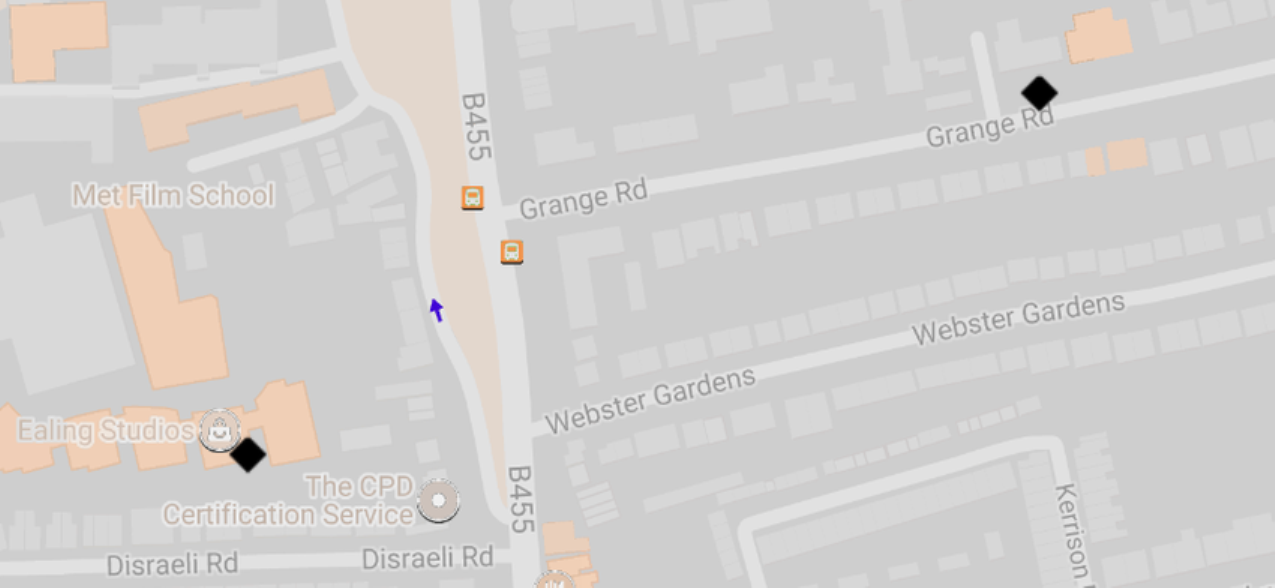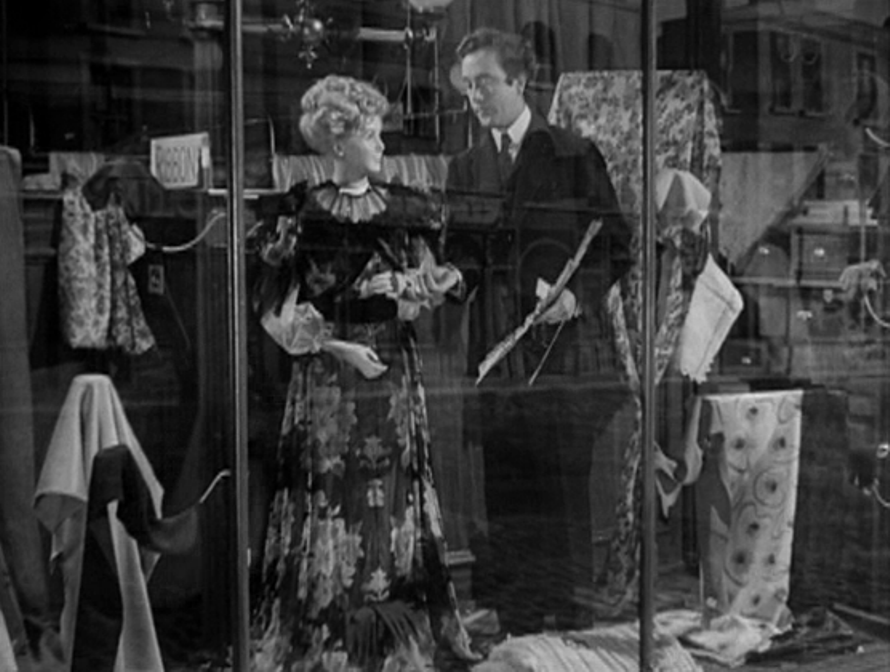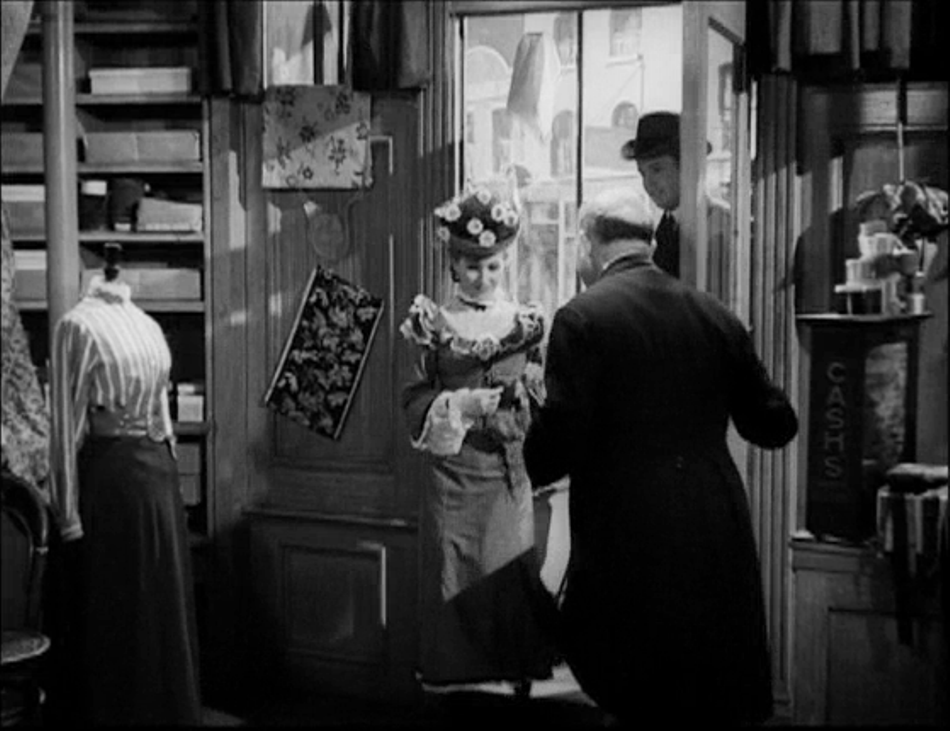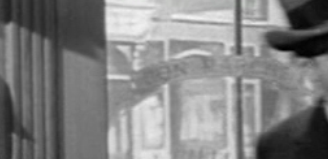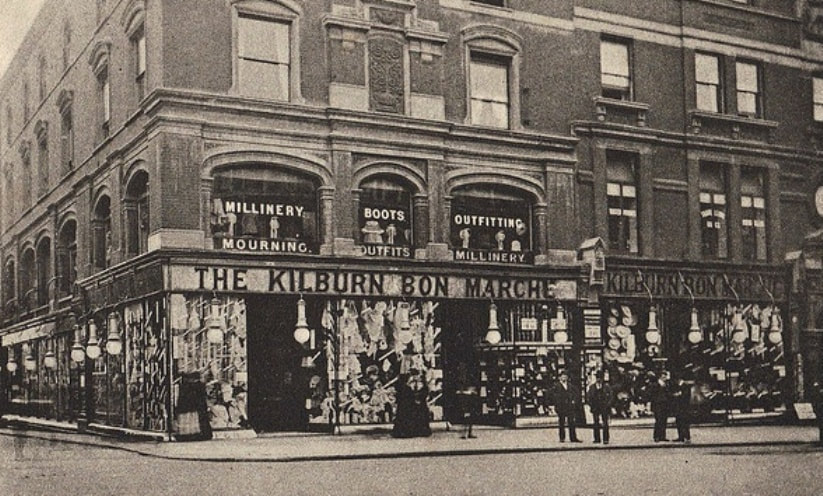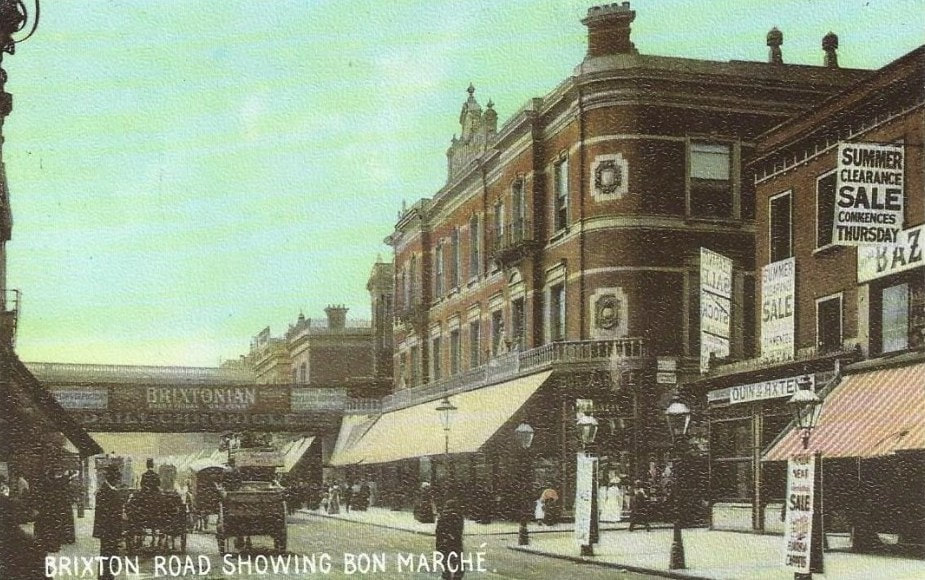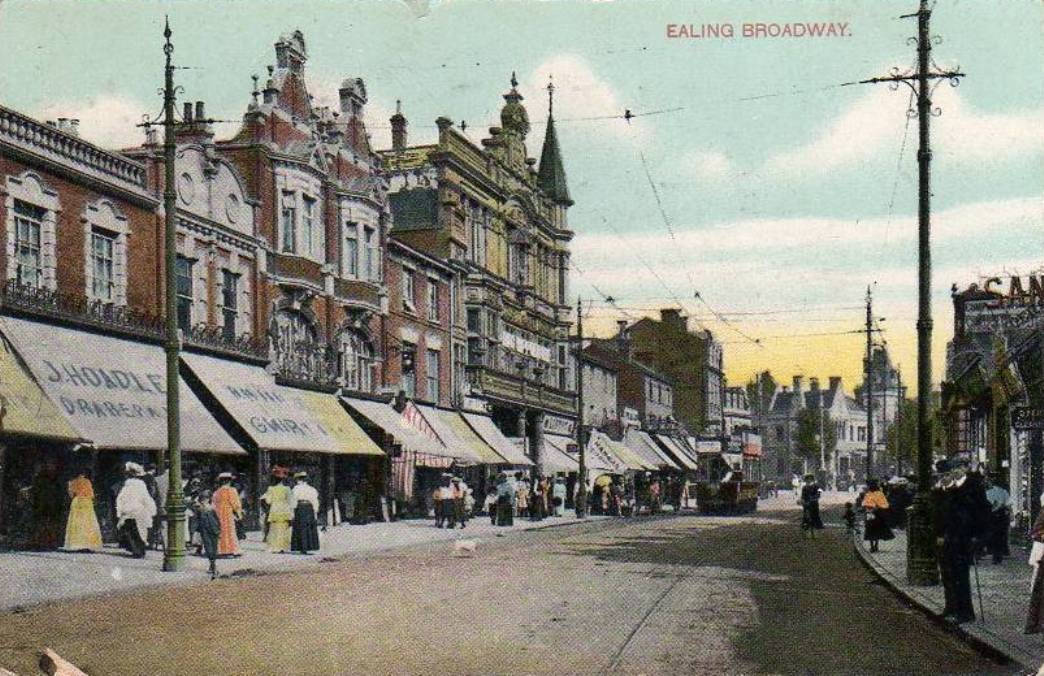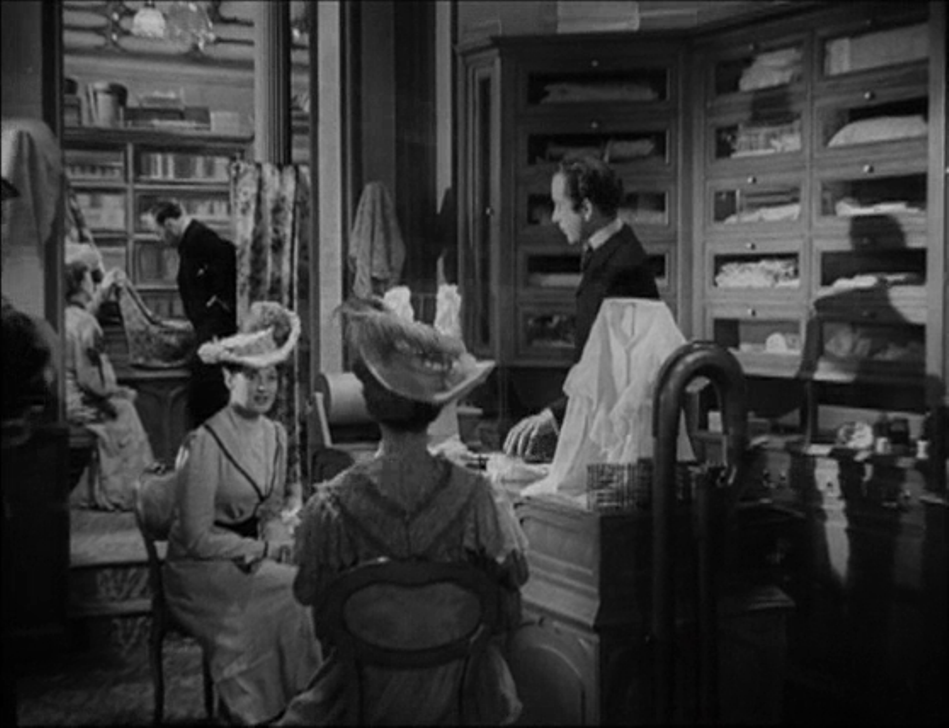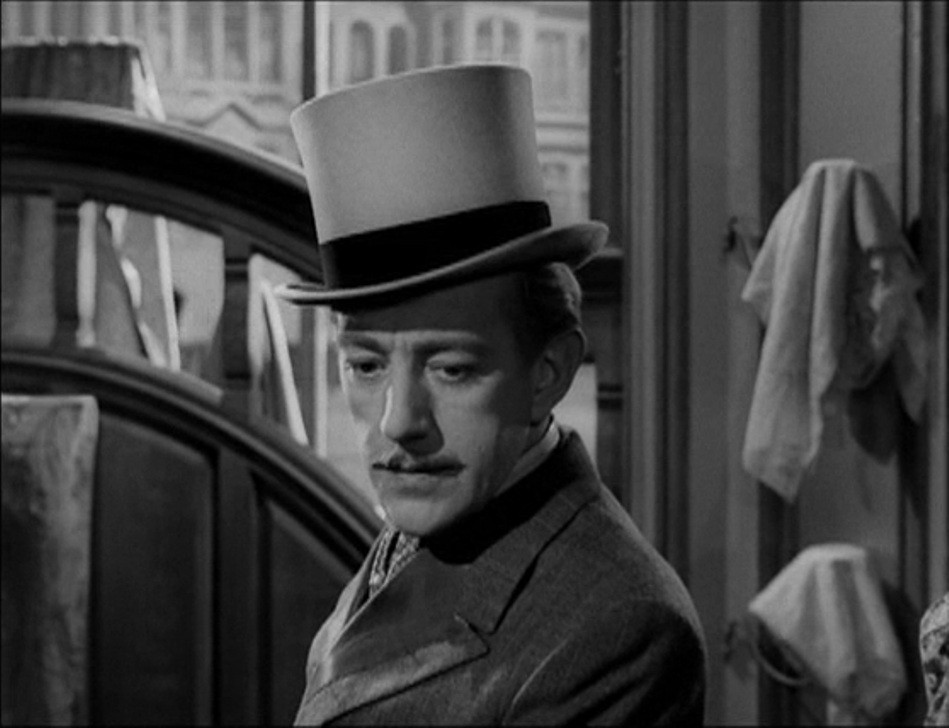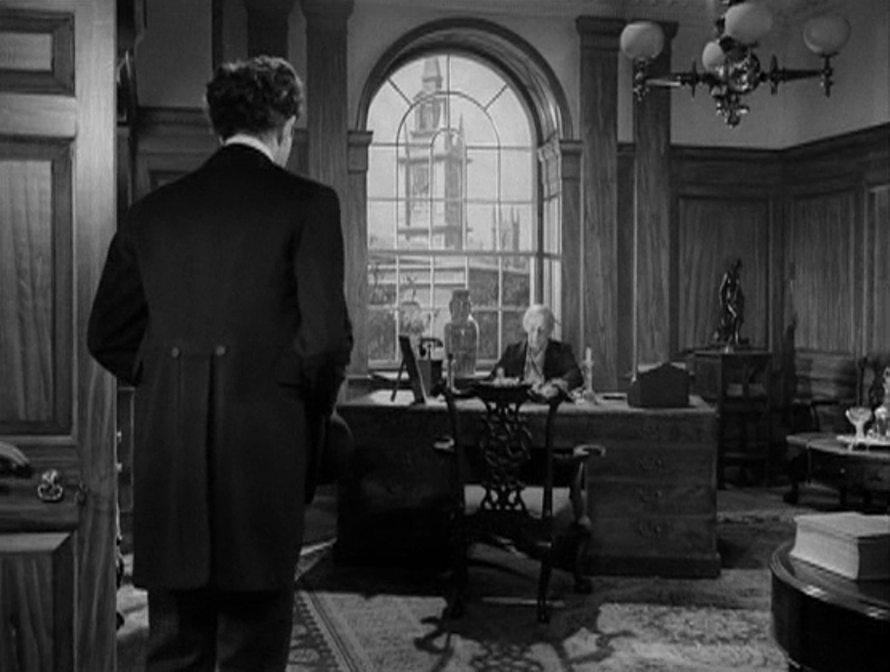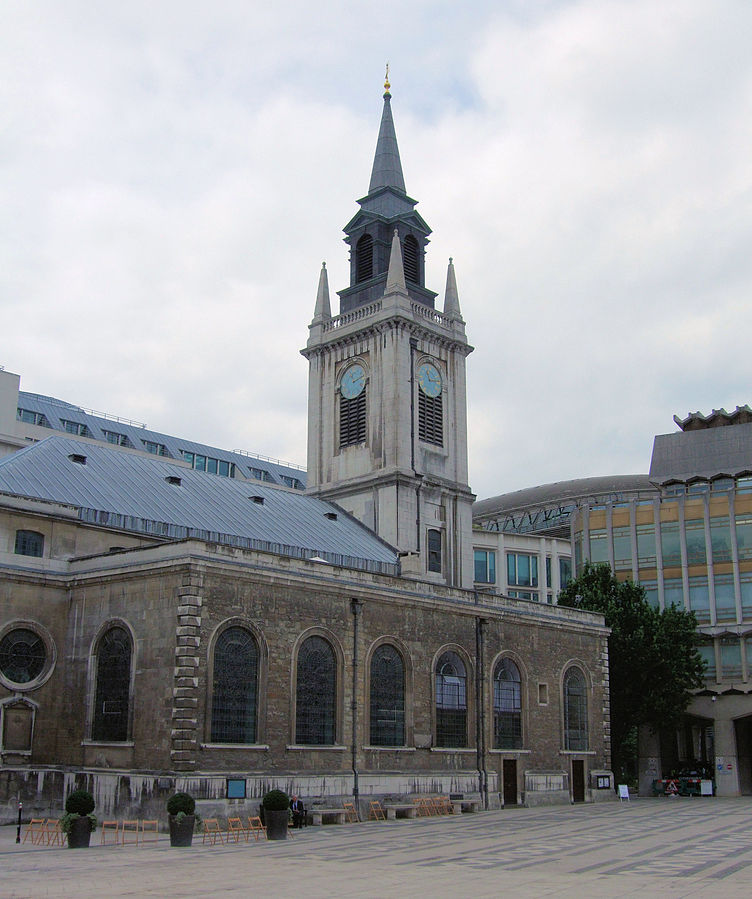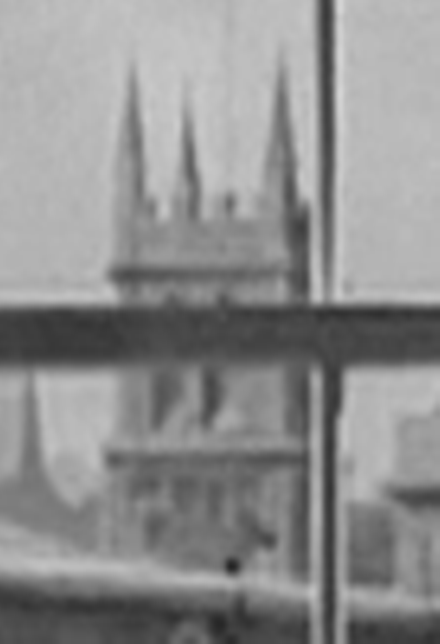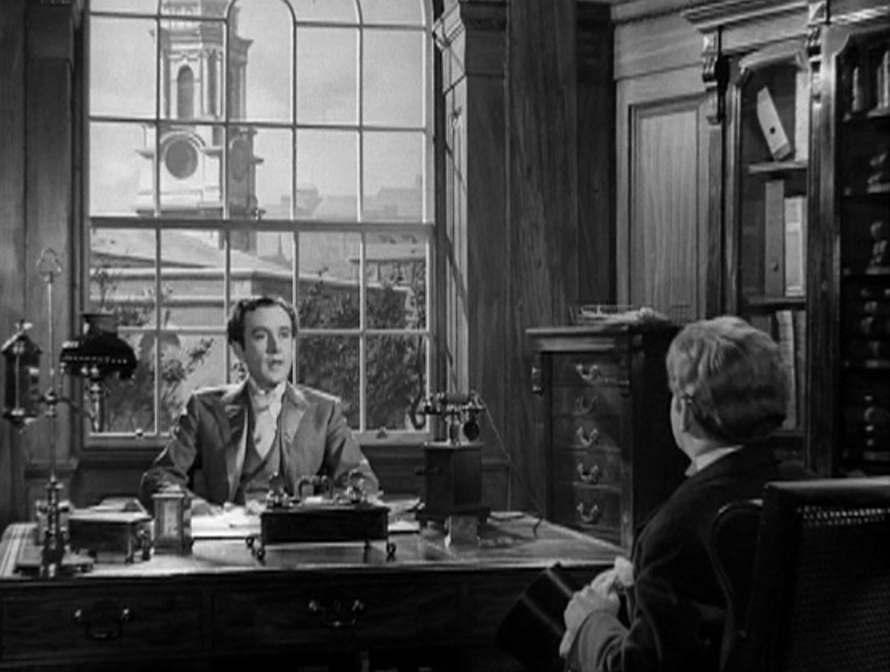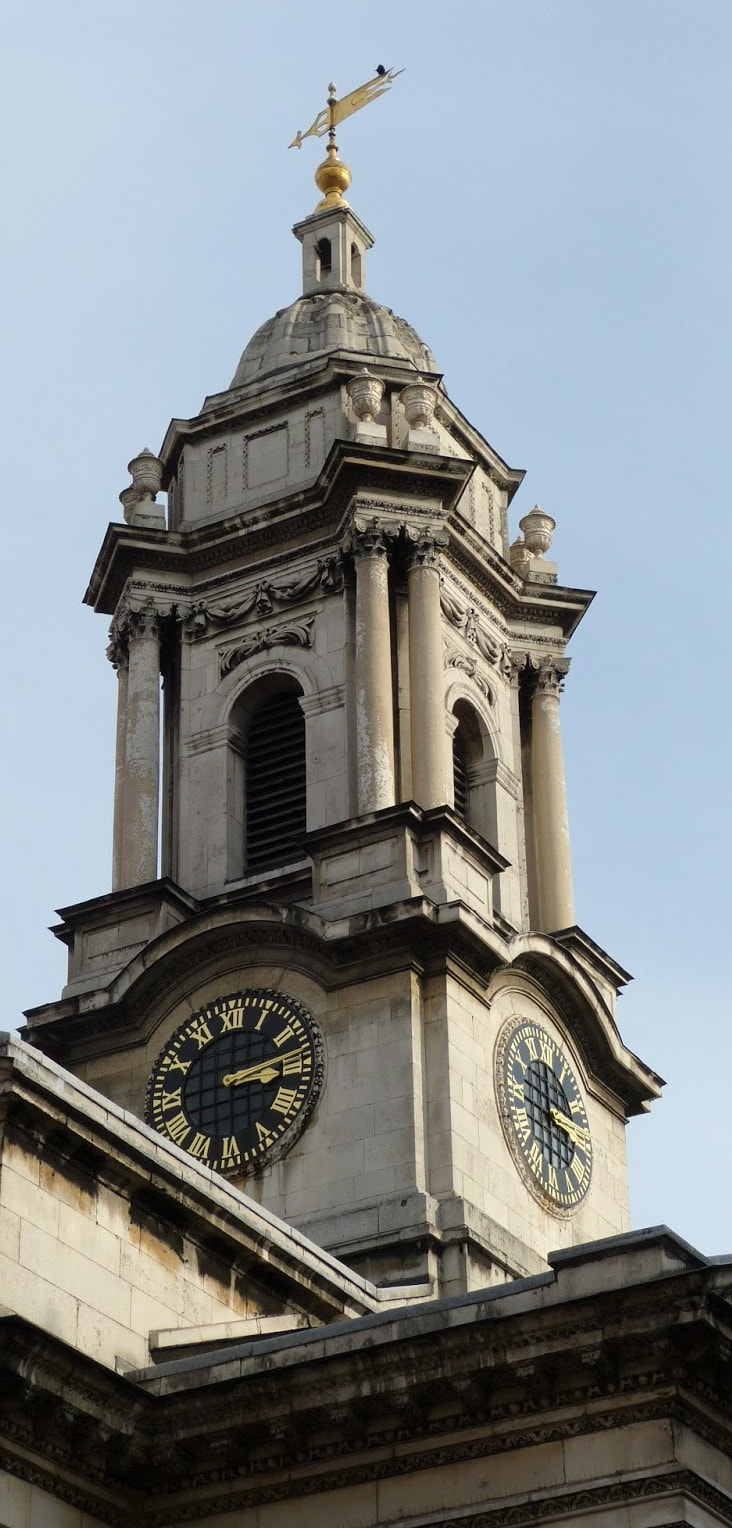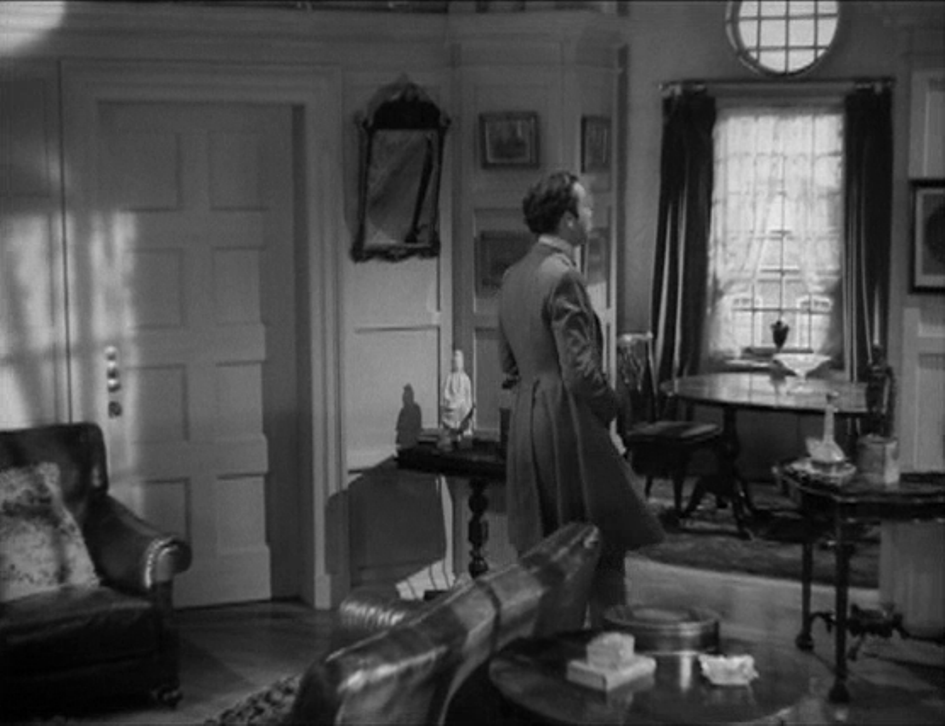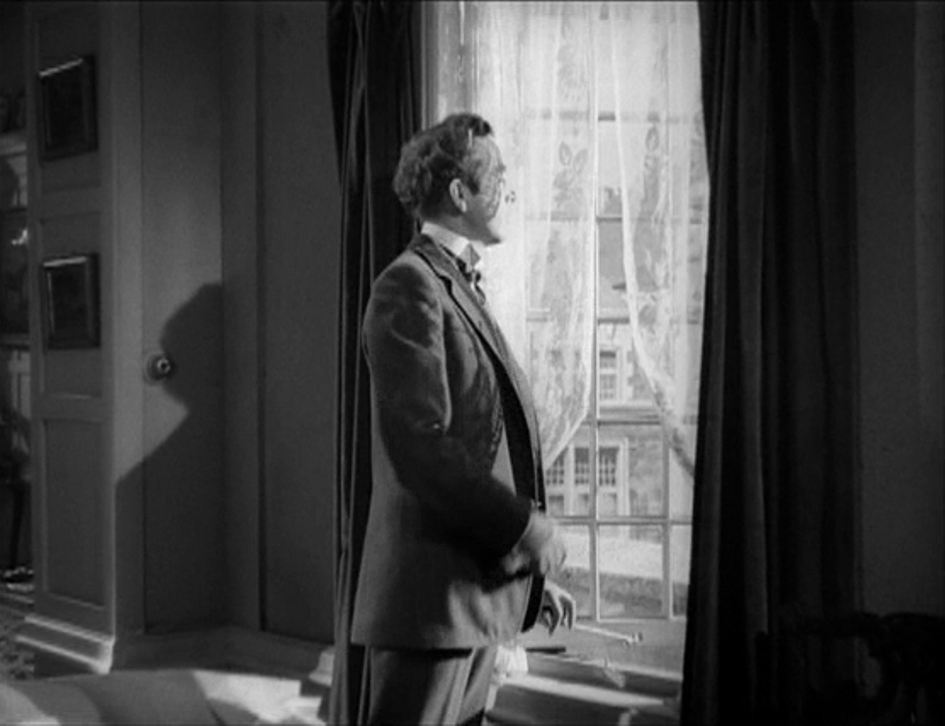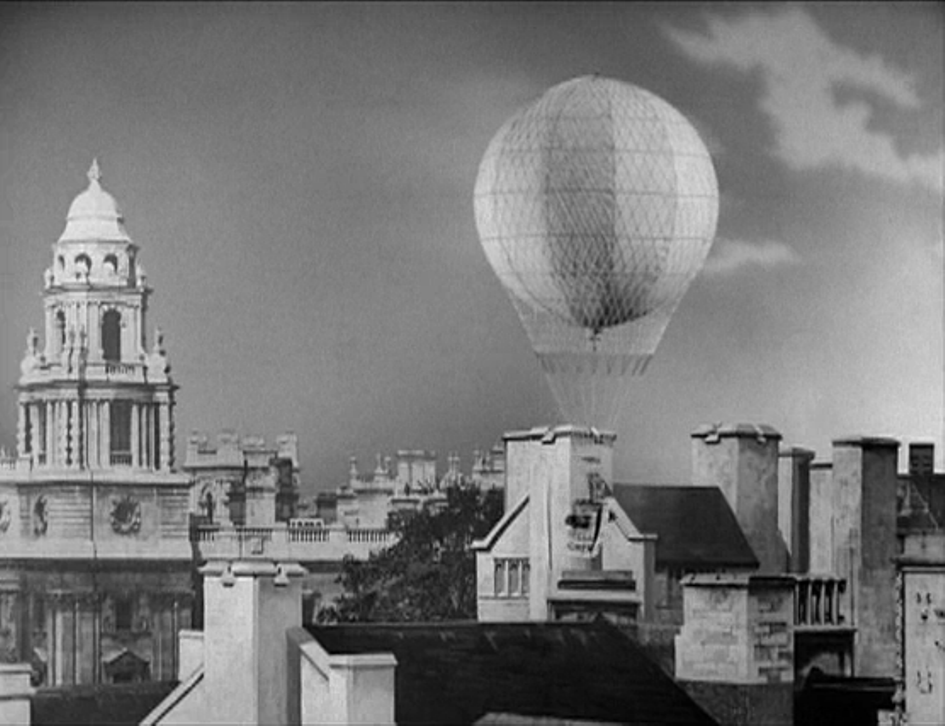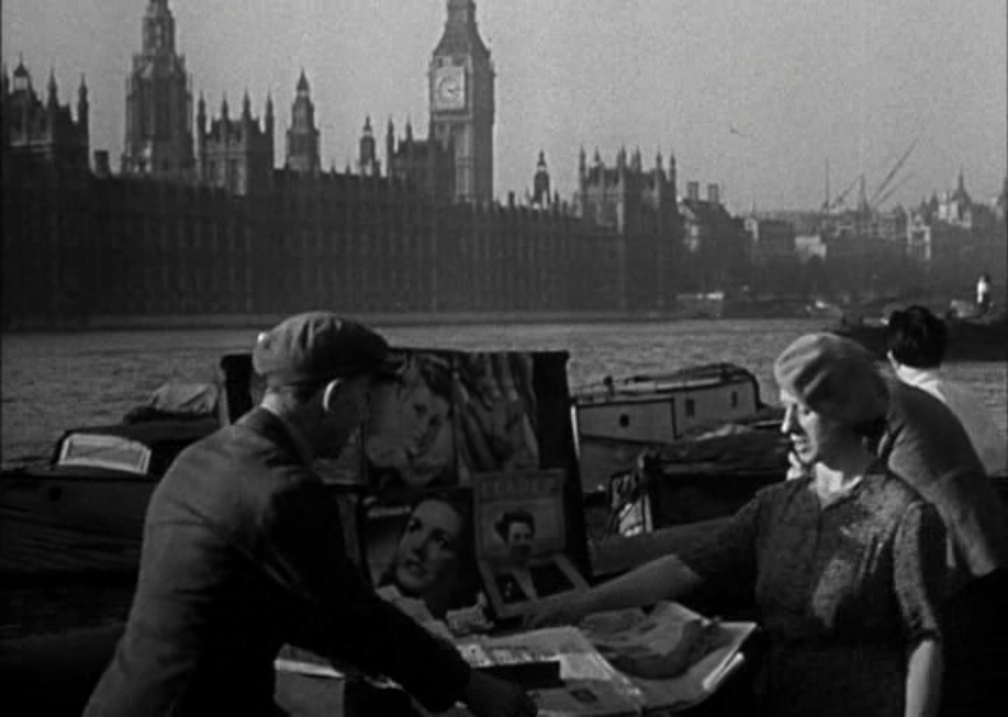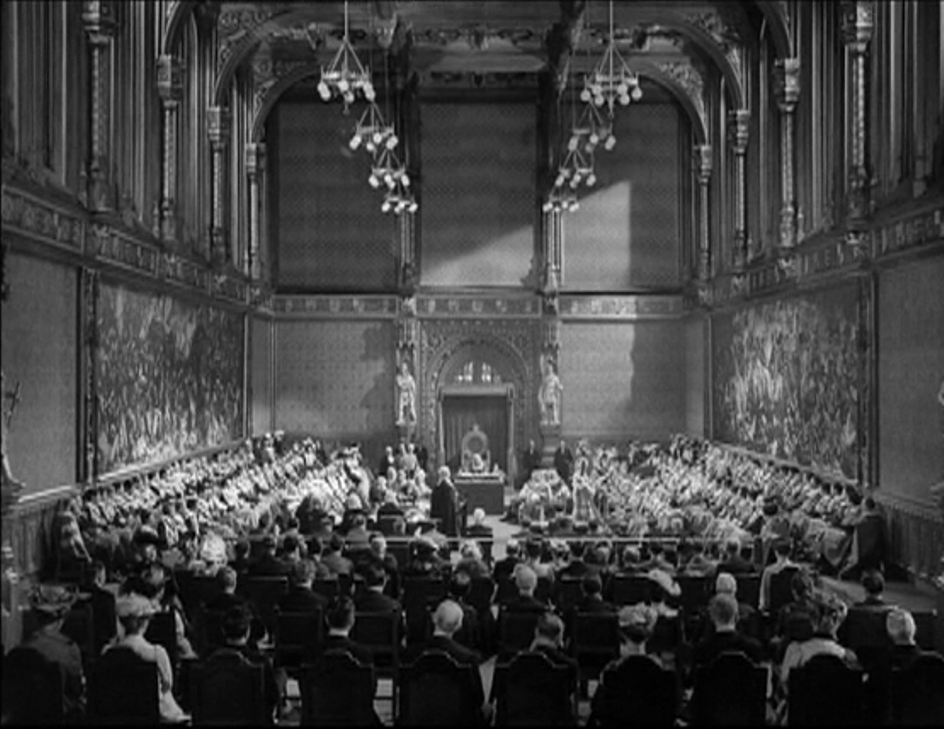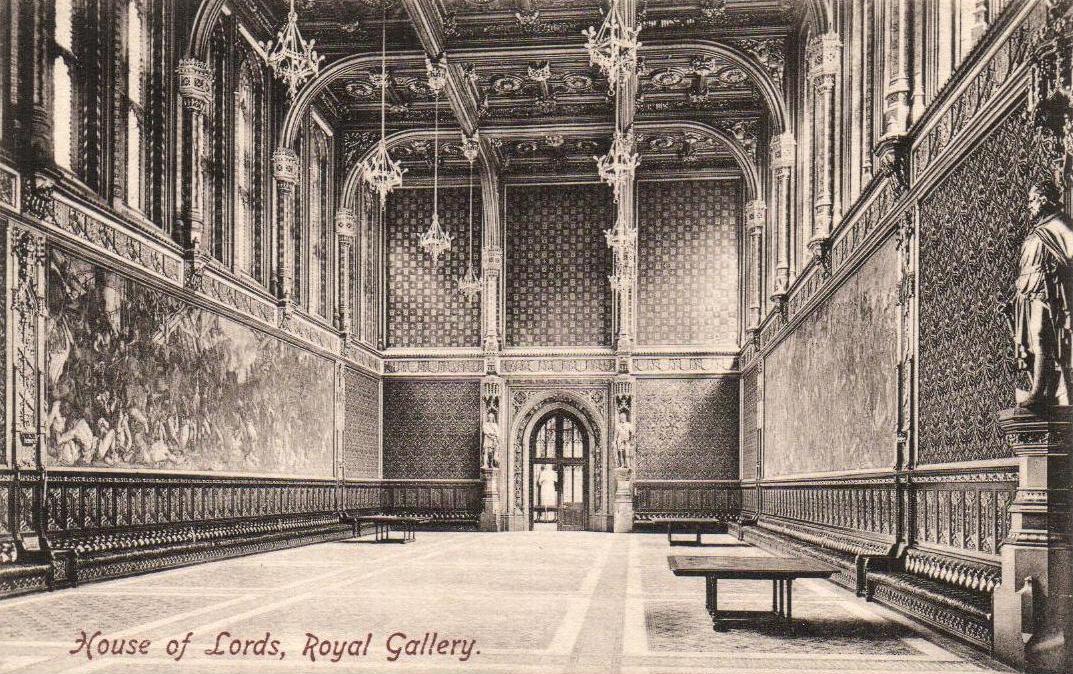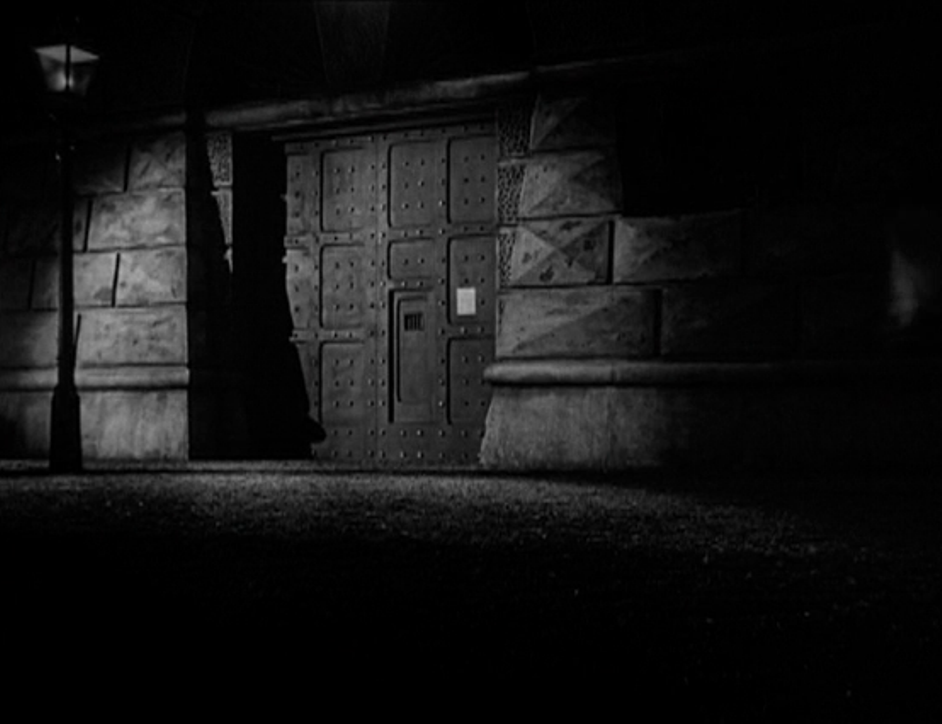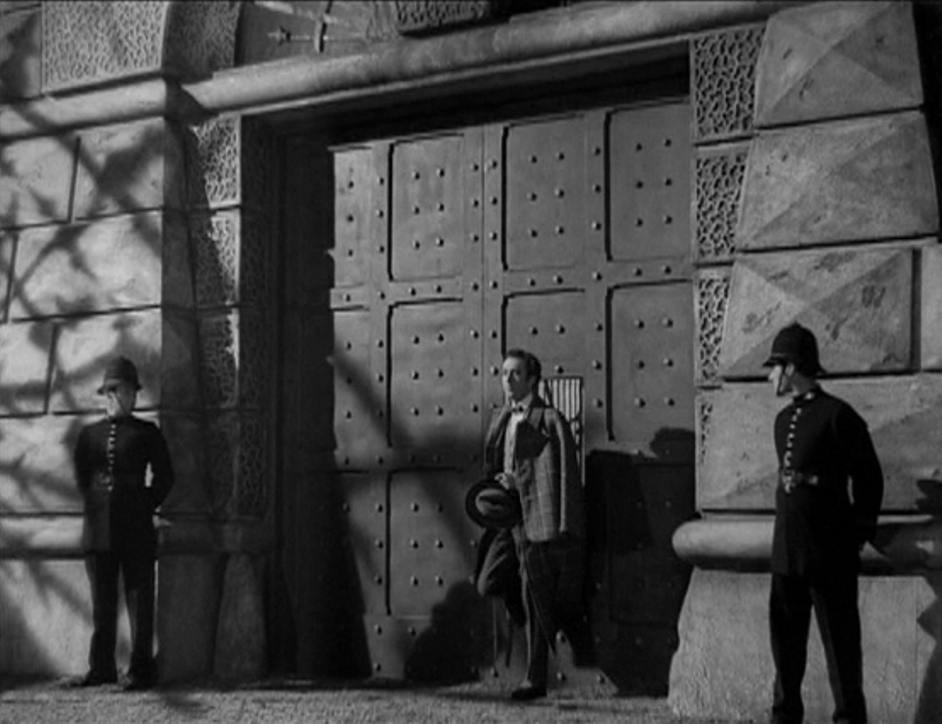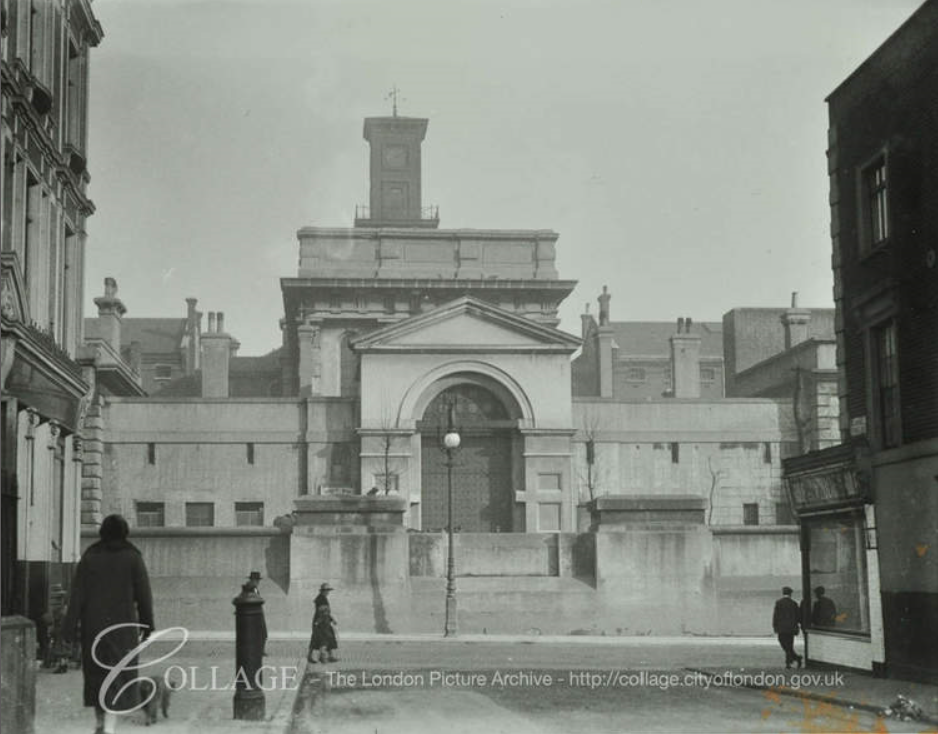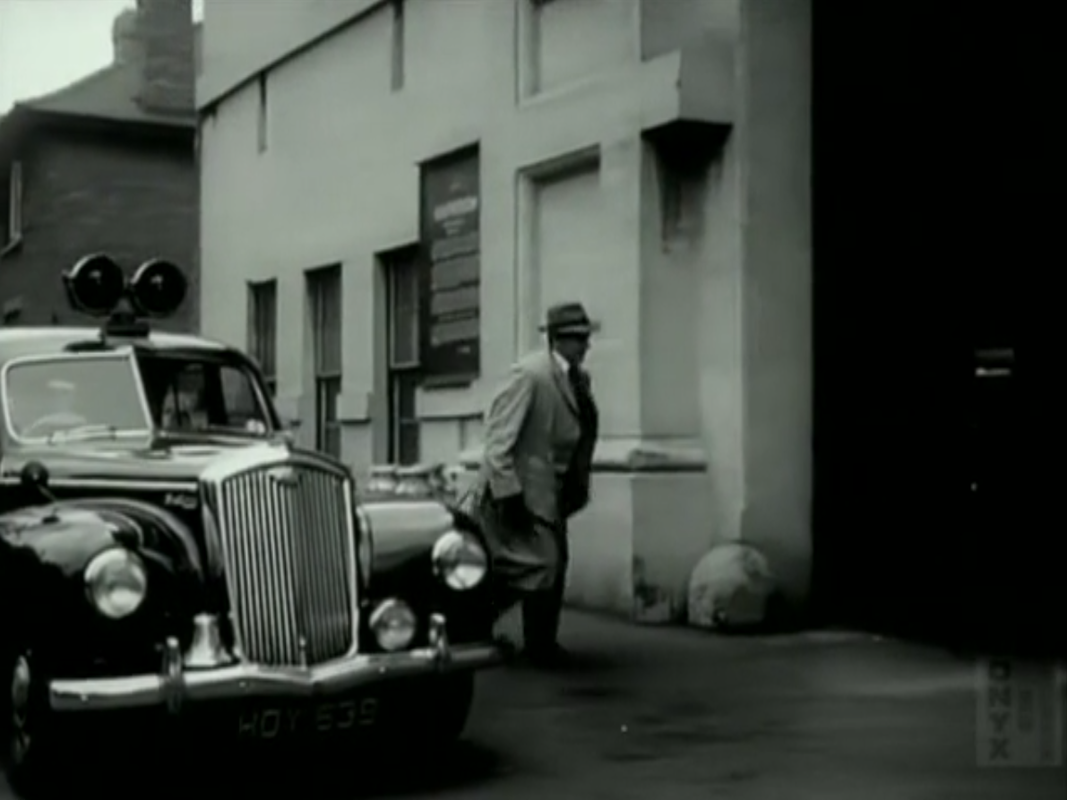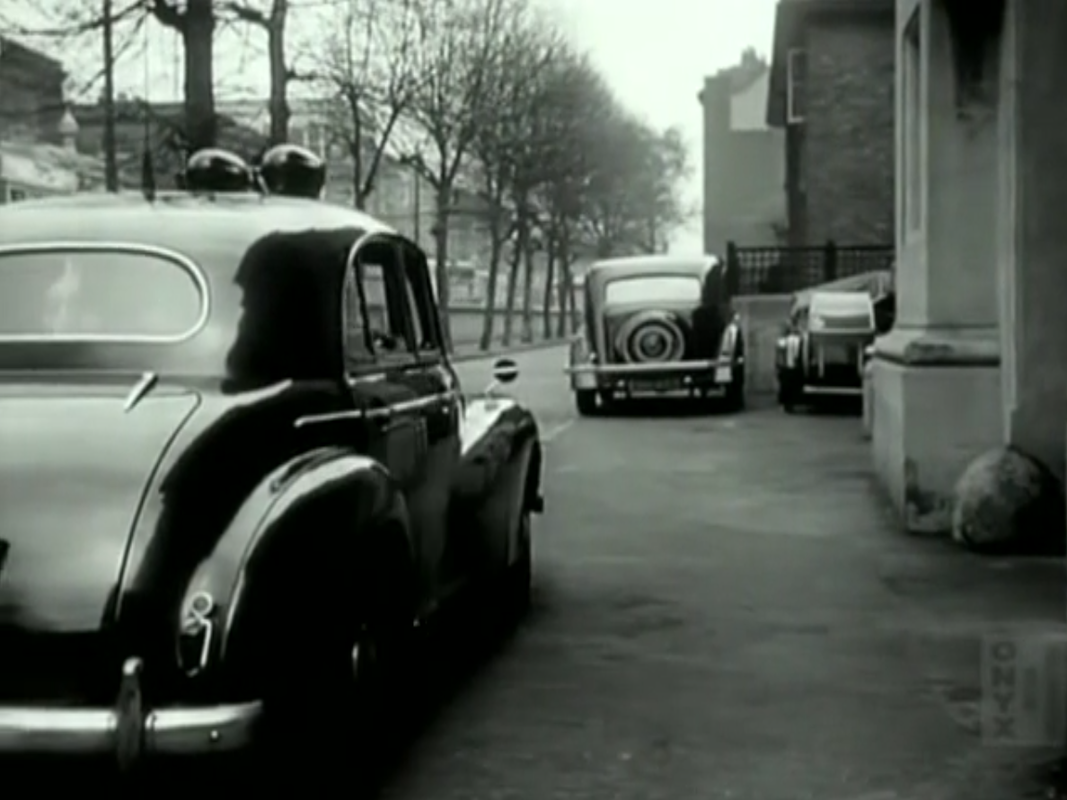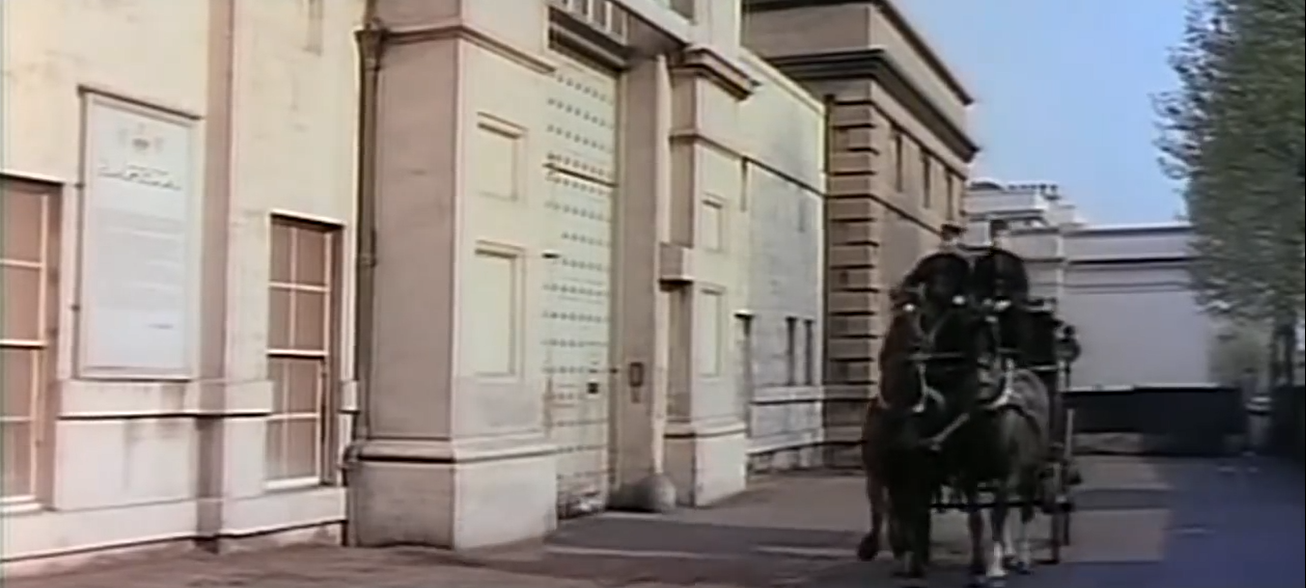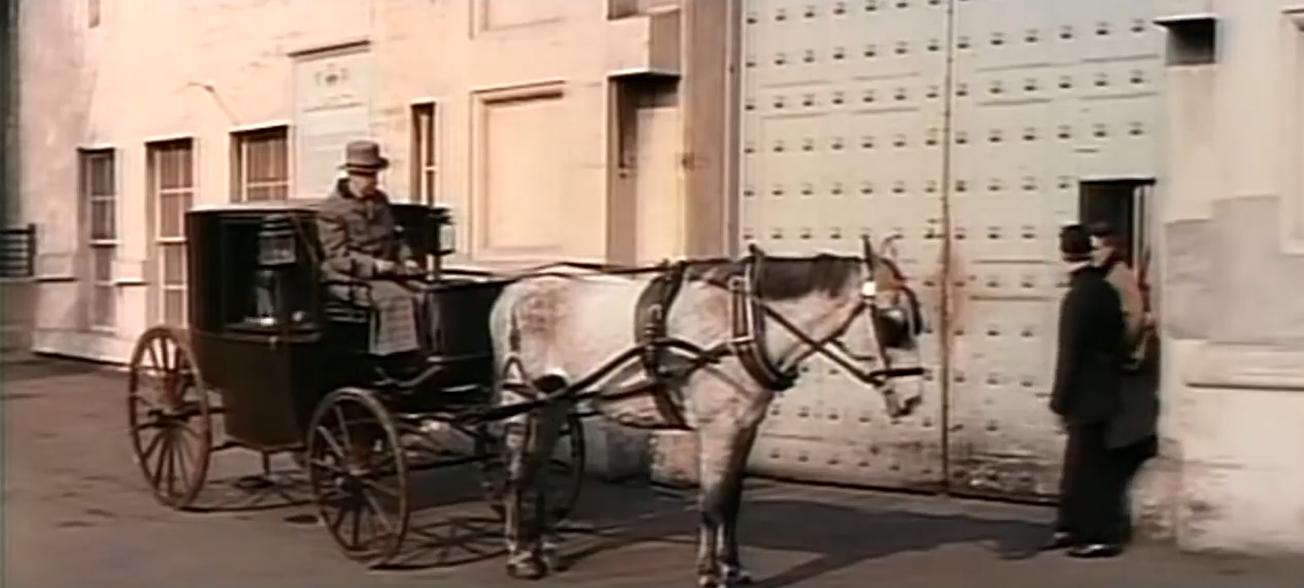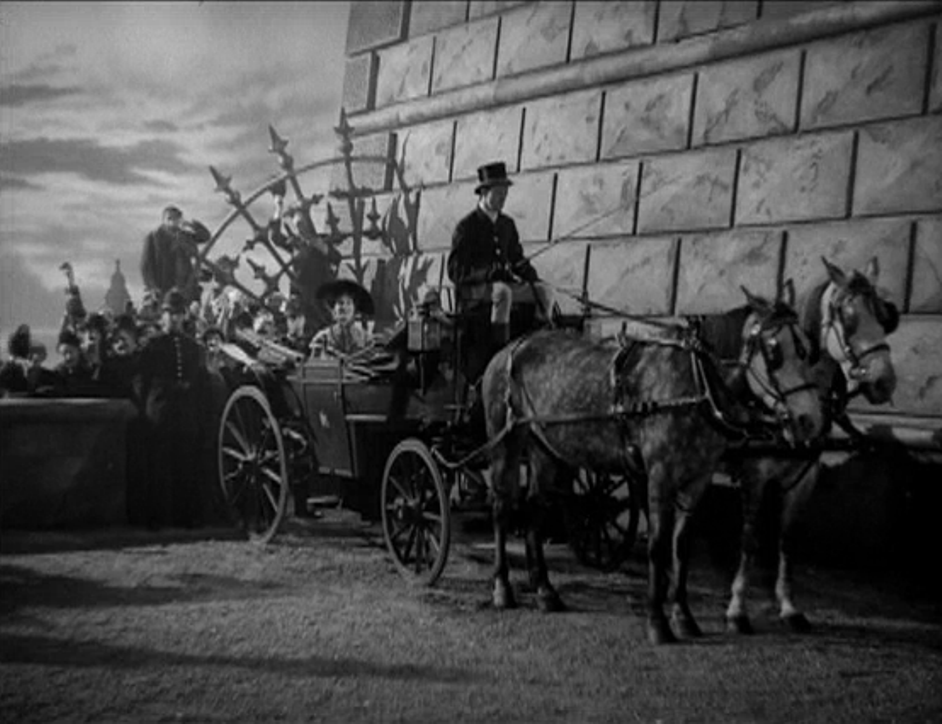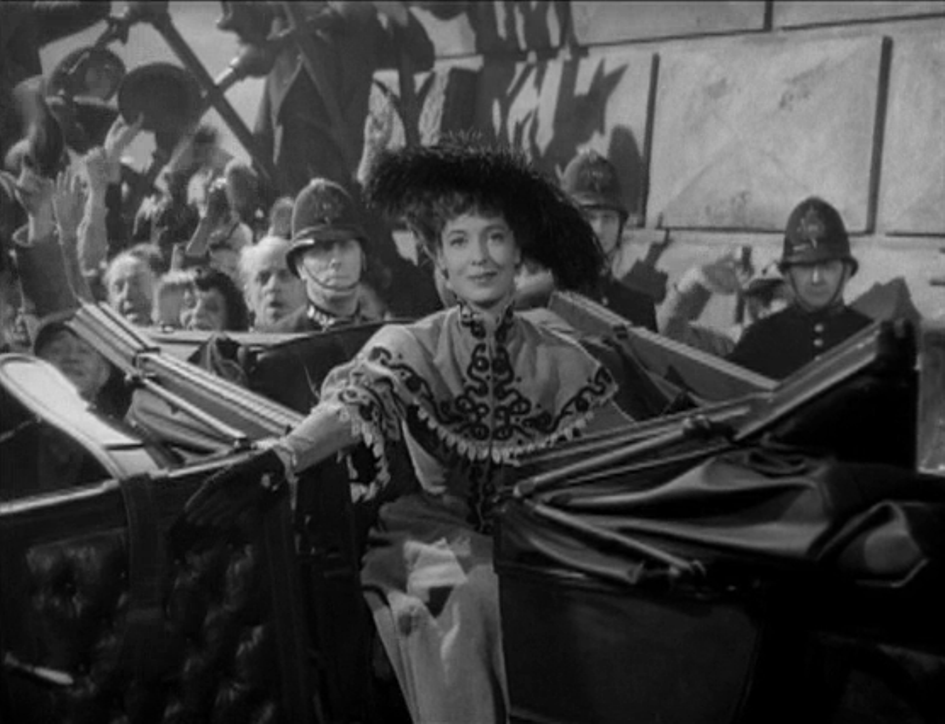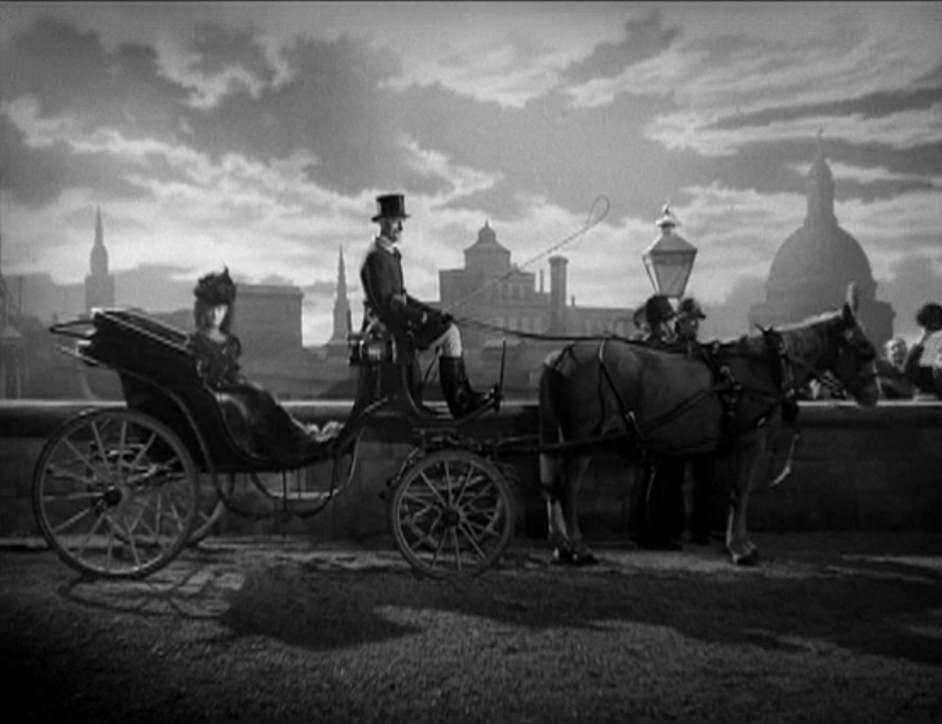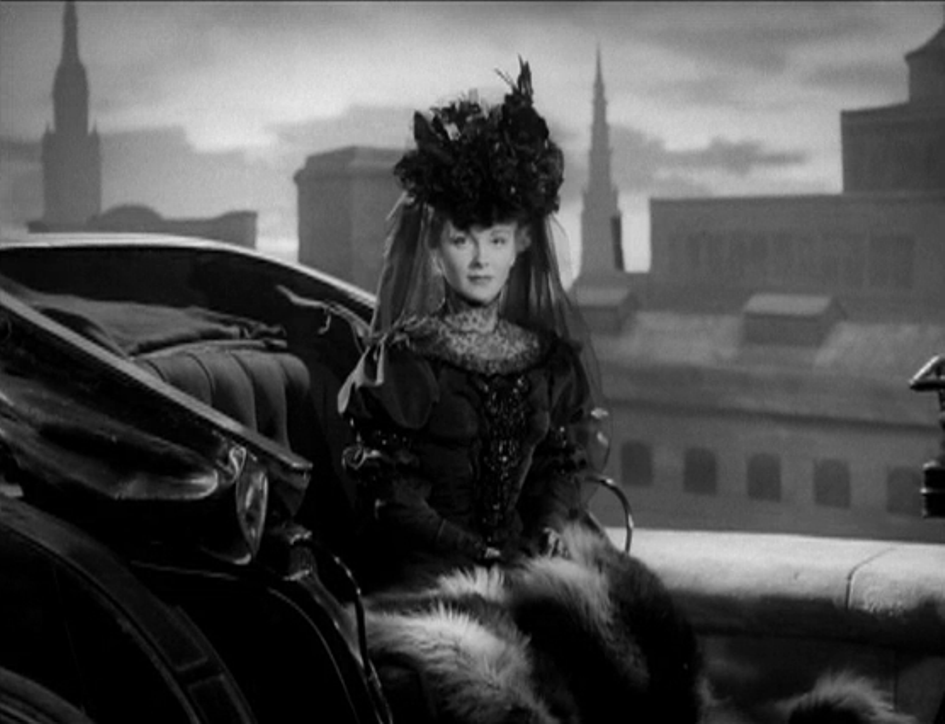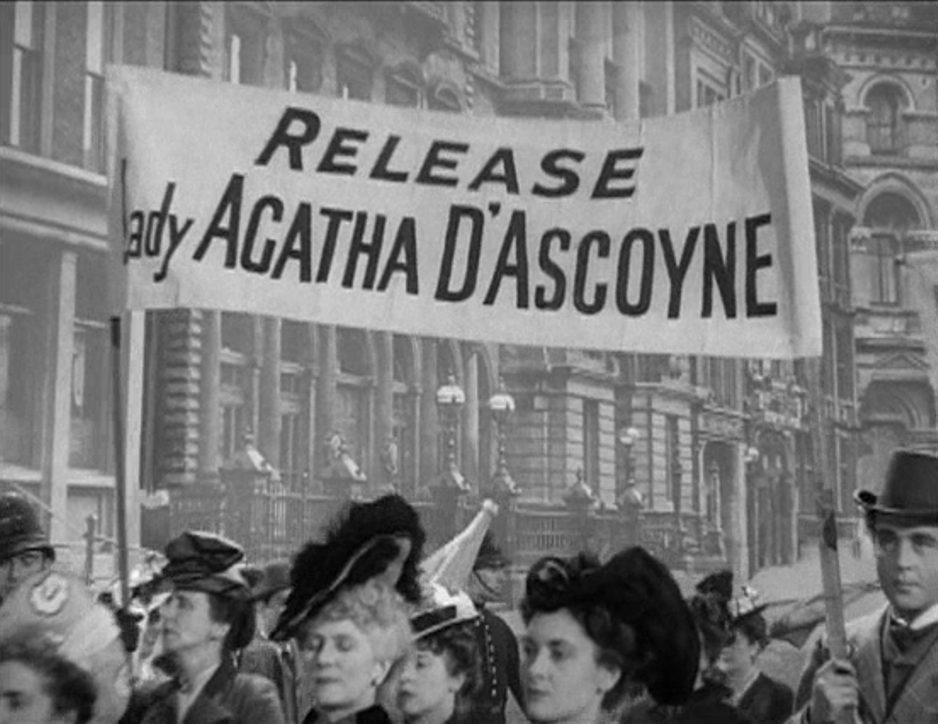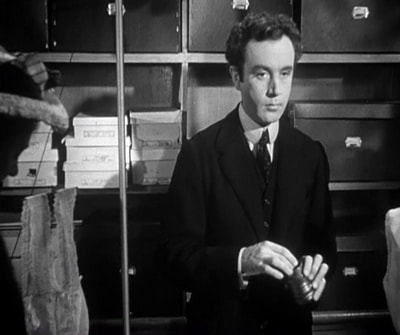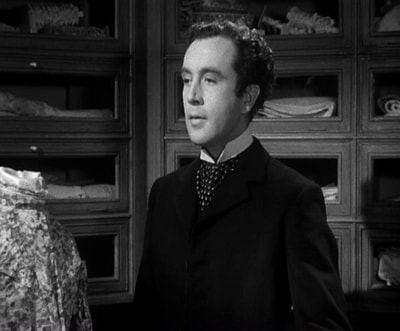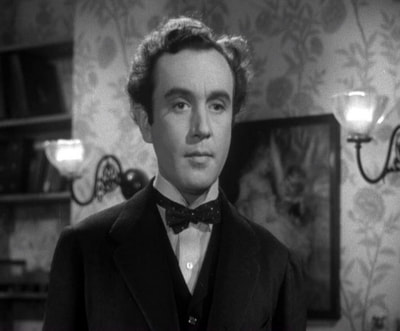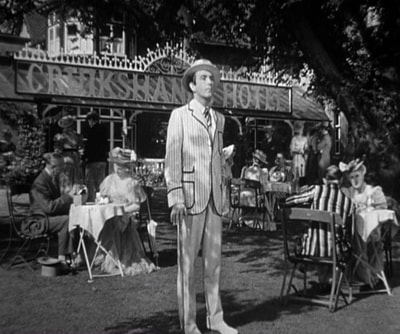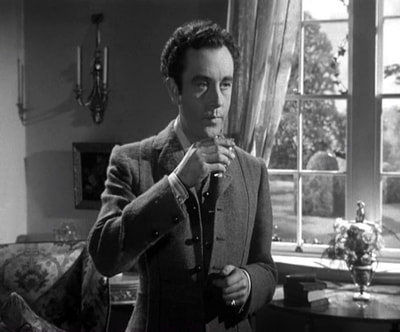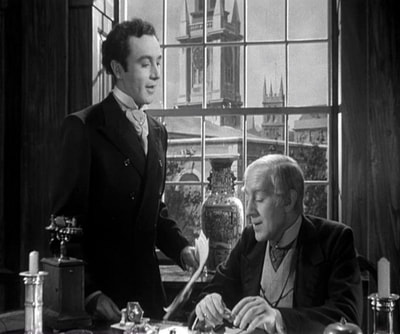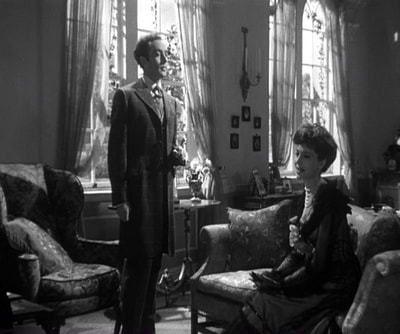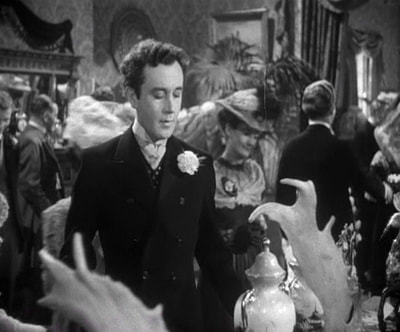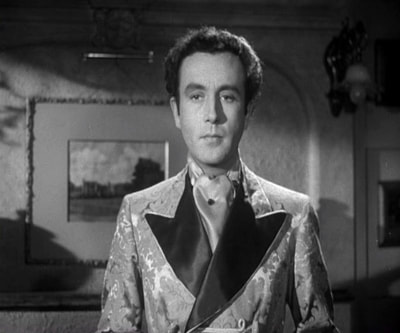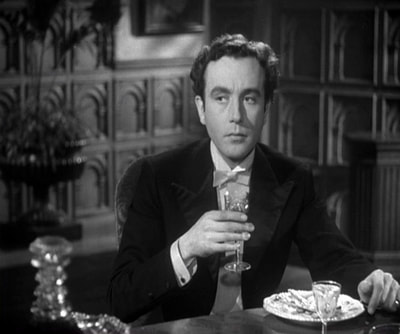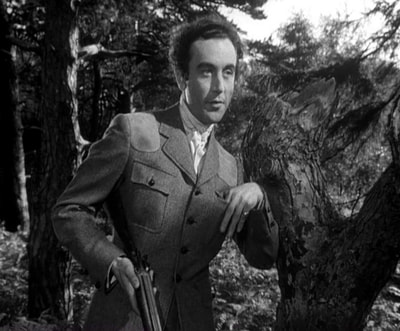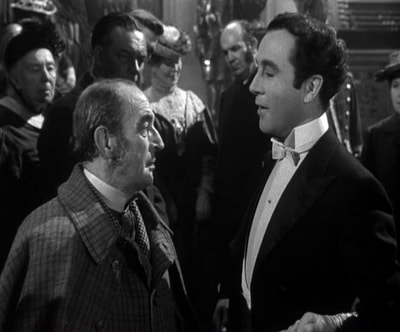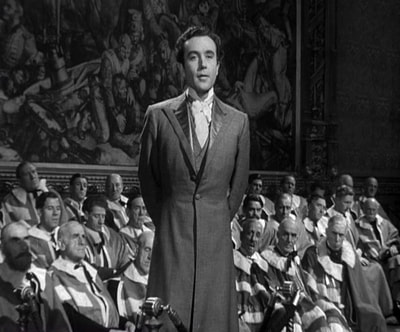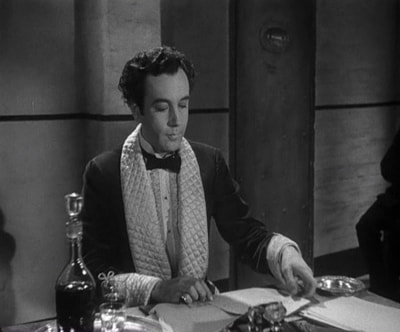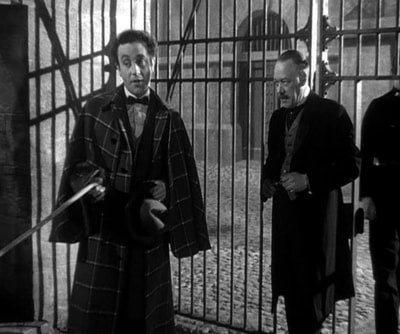suburbia and other places in Kind Hearts and Coronets
The class distinctions that motivate the story of Kind Hearts and Coronets (Robert Hamer 1949) are expressed from the outset as a difference between places. 'Mama was the daughter of the seventh Duke of Chalfont, of Chalfont Castle. She eloped with her handsome singer, and exchanged the medieval splendours of Chalfont Castle for the modern conveniences of number 73 Balaclava Avenue, S.W.':
The lower-middle-class suburban house to which the Mazzinis move and where, after the father's death, mother and son reside, is identified as being in the South London suburb of Clapham. The Duke of Chalfont later misremembers the place as Tooting, which is a little further to the south. For someone unfamiliar with London's suburbs the two are easily confused. The film itself exploits the characteristic anonymity of Edwardian suburbs to substitute one for another, representing the house in Clapham with a house on a street in the West London suburb of Acton, five miles or so from Clapham.
There is and was no Balaclava Avenue in Clapham; the Clapham street name in the film's source novel, Roy Horniman's Israel Rank (1907), was the equally fictional Ursula Grove. The change for the film makes a stronger connection with England's past glories, more pertinently evoked in 1949 than in 1907. We may remember the reference to Balaclava - a calamitous episode of the Crimean War - when later General Lord Rufus d'Ascoyne is demonstrating 'how he had fought the most calamitous campaign of the South African War'. Louis Mazzini, in planning the General's death, certainly remembers Balaclava and Tennyson's 'Charge of the Light Brigade' ('Cannon to right of them, Cannon to left of them'): 'It seemed appropriate that he who had lived amidst the cannon's roar should die explosively.' Mazzini's bomb is concealed in a pot of caviar; as he is about to dig into it the General comments: 'Used to get a lot of this stuff in the Crimea.'
Clapham was the setting in the novel, and much is made of it as the type of London suburbia. The choice is perhaps motivated by stereotypes of suburban ordinariness, best illustrated by Lord Bowen’s ‘man on the Clapham omnibus’, given renewed currency in a 1903 court case. In the film, the narrator's mother becomes this figure's functional complement - 'the woman under the Clapham tram' - when she is knocked down and killed by just such a vehicle.
The choice of a house in Woodhurst Road, Acton, as location was more simply motivated - its convenient proximity to the film's production base in Ealing:
Clapham was the setting in the novel, and much is made of it as the type of London suburbia. The choice is perhaps motivated by stereotypes of suburban ordinariness, best illustrated by Lord Bowen’s ‘man on the Clapham omnibus’, given renewed currency in a 1903 court case. In the film, the narrator's mother becomes this figure's functional complement - 'the woman under the Clapham tram' - when she is knocked down and killed by just such a vehicle.
The choice of a house in Woodhurst Road, Acton, as location was more simply motivated - its convenient proximity to the film's production base in Ealing:
The substitution of Acton for Clapham would not have gone unnoticed by all audience members. Residents of the actual street or of streets in the vicinity may have recognised on screen the relatively distinctive combination of mouldings and ironwork on these house fronts:
The castle with which this residence is contrasted would be more easily recognised by a much larger portion of the film's audience. 'Chalfont Castle' is Leeds Castle, near Maidstone in Kent, one of England’s best preserved, most distinctive and most easily recognisable landmarks. No one with an interest in English heritage sites could fail to identify it, so that for a large part of the immediate target audience the deception was merely a game, entailing the suspension of disbelief:
In the novel the ancestral home is called Hammerton. The fictional name given to Leeds Castle in the film is probably motivated by the topography of the film's production. Limited space at the studios in Ealing meant that Pinewood studios were used for several interiors. Just north of Pinewood are the Chalfonts, an area including Chalfont Saint Giles, Chalfont Saint Peter and Little Chalfont. The production certainly identified with this area, since Denham, another small village near Pinewood, provided the location for the village church at Chalfont where the D'Ascoynes are buried:
Views of the gravestones in the churchyard combine with the splendour of the d'Ascoyne family vault to reinforce the contrast between Chalfont and the suburb to which Louis's mother had been exiled. Her dying wish was to be buried at Chalfont, a request refused by the Duke. 'Standing by Mama's poor little grave in that hideous suburban cemetery, I made an oath that I would revenge the wrongs that her family had done her.'
Chalfont is a combination, then, of locations in Buckinghamshire and Kent. Other locations around Maidstone in Kent combine to represent the village where young Henry d'Ascoyne lives:
The one other location outside of London is at Maidenhead, Berkshire:
(These and most of the other locations in this post were identified at Reelstreets and at the BritMovie forum.)
The narrative of Louis Mazzini's rise to the dukedom progresses topographically, as he moves from home to home and from workplace to workplace. After the initial contrast between a splendid castle in the countryside and a modest terraced house in the suburbs, within the suburb itself a contrast is presented, opposing the Mazzinis' humble home to the grander house of Dr Hallward, where Sibella lives:
This now-demolished house was at 31 Grange Road, Ealing:
if Woodhurst Road in Acton was chosen for its proximity to the studios, the reason for choosing this location is even more obvious. Grange Road is just yards from Ealing Studios:
While living at Balaclava Avenue Louis finds employment in a local drapery store. Reflected in the glass of the display window a parade of shops opposite can just be made out:
A view from inside the shop shows a little more detail of the other side of the street:
|
A clue to where this shop might be - if it is a real shop - becomes visible on the door as it closes (right). The sign says 'Bon Marché', the name of a department store in Brixton. There were other stores with that name in various parts of London at different times, but I haven't pinned any of them down as a possible location, if this is indeed a real sign on the door of a real shop.
|
Without the Bon Marché clue my guess would have been that the shop was in Ealing. Here is a drapery store on Ealing Broadway, from the period in which the film is set:
By this point Louis is lodging with the Hallwards, having moved there after his mother's death: 'it was galling to accept the status of a poor relation.' He gets advancement in the drapery business: 'I decided that if I was to be a draper, at least I would not be a suburban draper, so I migrated to a large modern store which had just been opened in the West End.' This second shop is shown only as an interior; the glimpses of the street outside - reflected in glass or directly through a window - are this time, I think, part of the studio construction:
After his murder of young Ascoyne d'Ascoyne, Louis is offered a position in the family banking house by old Ascoyne d'Ascoyne. The bank is represented entirely through sets. The church seen through the window is Christopher Wren's St Lawrence Jewry on Gresham Street, situating the bank in the City:
This looks very much like St George's, Hanover Square, which would make of the views from the windows of the d'Ascoyne bank an impossible geography, to borrow Charlotte Brunsdon's phrase.
As his situation improves Louis changes home again: 'I left the Hallwards' house and took a bachelor apartment in Saint James's. Clapham no longer held Sibella's presence to compensate me for the tedious journey between the suburbs and the City.' His new apartment is shown mostly from the inside, though there are two views through windows:
From the latter window Louis shoots the arrow that brings down Lady Agatha d'Ascoyne's hot-air balloon. She had just been shown passing the Government Offices near Parliament Square, and is described - in rhyme - as landing in Berkeley Square:
Wherever exactly in St James's Louis's apartment is supposed to be, this combination of places constitutes another impossible geography.
Across the square from the Government Offices are the Houses of Parliament, shown a half an hour later in the film, in a view from across the river:
A view from a similar position appears the same year in Passport To Pimlico:
The latter view contrasts the remoteness of authoritarian government and the proximity of the common people, in keeping with the film's demotic theme. From the exterior view of the Houses of Parliament in Kind Hearts and Coronets we move inside to the House of Lords, enacting Louis's own movement from commoner to noble. The setting for this seven-minute sequence is an authentic reconstruction of the Royal Gallery:
Louis's progressive changes of domicile and place of work apparently cease when he accedes to the dukedom; he will live at Chalfont and, presumably, no longer work in the family bank. However, on the day he takes up residence at the castle he is arrested for murder and taken to Pentonville Prison. I have no means of gauging whether the interior views of the prison are accurate representations. The studio-set representing the prison's exterior is shown in the opening and closing sequences of the film:
By comparison with this photograph from 1920, we can see that this is only an approximate representation:
The real entrance to Pentonville Prison was shown in They Can't Hang Me (Val Guest 1955):
And again, in a scene very like the end of Kind Hearts and Coronets, in The Trials of Oscar Wilde (Ken Hughes 1960):
On his release, Louis's wife is waiting in a carriage on the north side of the entrance and his mistress is waiting in a carriage on the south side. The background to the Duchess shows a single building in the distance and a large expanse of the prison's wall, suggesting that life with her would be dull and oppressive:
Whereas Sibella is positioned in front of a cityscape comprising several buildings and an expanse of variegated sky, suggesting the interesting variety that life with Sibella would offer:
The panorama includes two church spires, a large institutional building that I don't recognise, and the dome of St Paul's Cathedral. The cathedral is indeed in that general direction, though in reality it wouldn't loom so large, if indeed the view was not obstructed. This composite image of London brings aptly unreal closure to this brief examination of urban topography in Kind Hearts and Coronets.
appendix: an unidentified street, and Louis's dress sense
Louis is shown participating in a pro-suffrage demonstration, on a back-projected street that has so far eluded identification. All suggestions very welcome, here.
Though there is almost no connection with the places in this film, I strongly recommend the wonderful page on Louis's changes of clothes at the website Clothes On Film:
https://clothesonfilm.com/kind-hearts-and-coronets-decadent-dennis-price/
